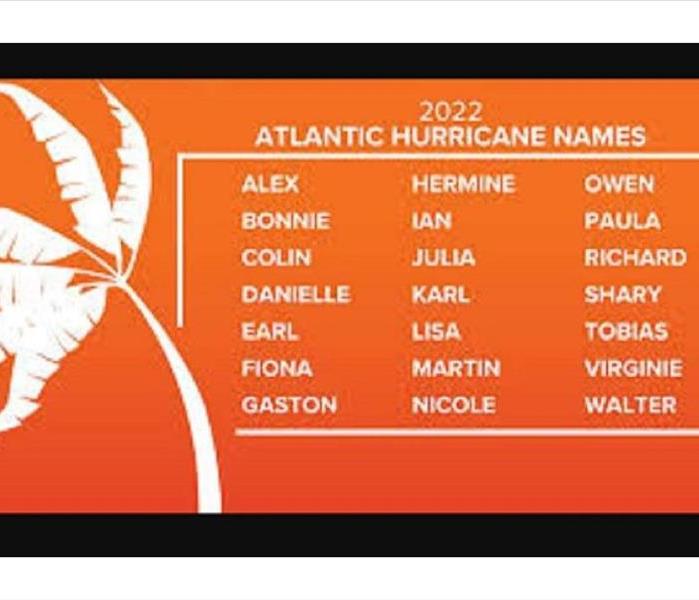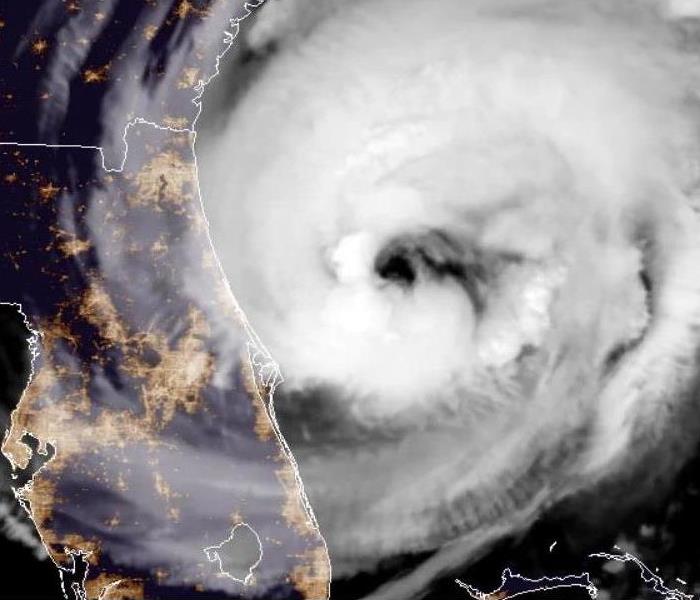Recent Storm Damage Posts
Be Prepared for Helene
9/24/2024 (Permalink)
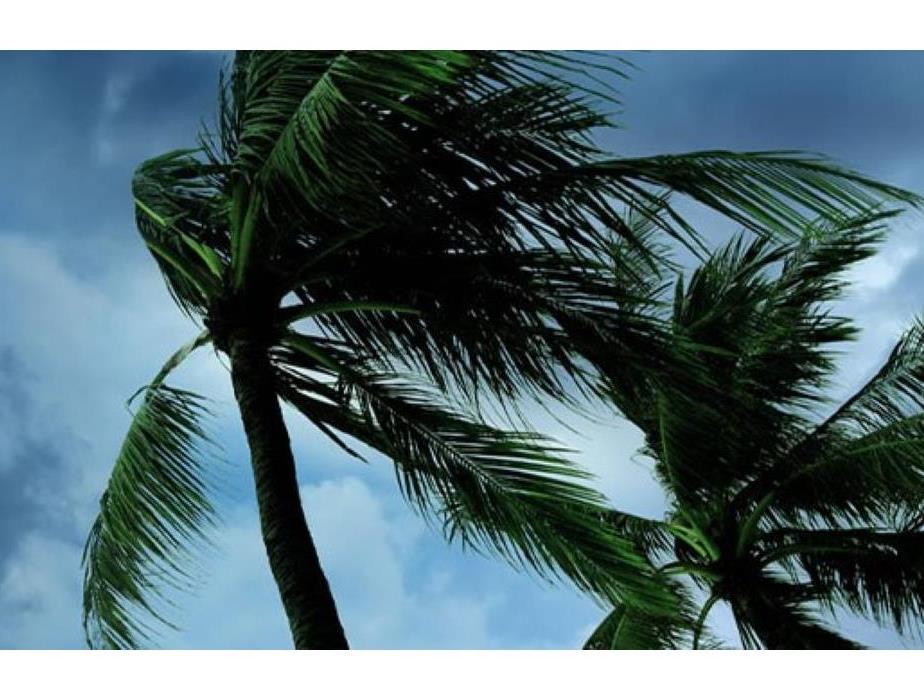 Prepare for Helene before it makes landfall.
Prepare for Helene before it makes landfall.
Given the current projected path of Helene, we’re preparing for power outages from what is forecast to be a very dangerous storm. Severe winds, heavy rain, extensive flooding and storm surge could pose significant challenges to power restoration efforts.
We urge you to prepare and want to help you understand how we operate during this time. While our office continues to take phone calls and develop a list of potential customers, our initial focus will be on addressing immediate concerns that we are able to. If your home floods with rising water and it has not receded lower than your home we might not be able to access your home until the water recedes. In addition even if we extract the water it will continue to come in so we will not schedule to come until the source of incoming water has stopped. We also need power or approval of a generator to enable drying the structure and contents.
Please remember, stay away from downed power lines, flooding and debris. There are many resources to help with preparation. Now is the time to prepare, not once it has already made land fall. Visit FPL's Storm Center for important safety tips and a preparation checklist. Stay safe! FPL has a great variety of helpful emergency support so just click on this link VISIT STORM CENTER to see what you may need help with.
If Helene effects your home or business please feel free to reach out to us by phone @ 386-754-0261, facebook or even through our website at https://www.SERVPROcolumbiaandsuwanneecounties.com. We look forward to servicing any needs you might have.
How Technology is Valuable During a Storm
9/28/2022 (Permalink)
 Technology is your friend during an emergency situation.
Technology is your friend during an emergency situation.
While the idea of technology seems simple on the outside, the constant updates and innovations can deter people from learning all that their devices can do for them. When emergencies or natural disasters hit close to home, it can be extremely advantageous to know how to make the best use of your technological devices. Technology allows you to stay updated on outside conditions as well as let family and friends know where you are.
We recommend keeping portable chargers readily accessible so that you can make the most of your technology during an emergency. Keep these tips on how to effectively use your devices in mind.
Applications for News Updates
Checking apps for updates on your smartphone is a fast and easy way to catch up with the latest news in North Central Florida. Make sure you have reliable news apps downloaded before inclement weather hits so that you can stay posted on local weather conditions and national updates.
Mark Yourself Safe
Another helpful feature of social media that not a lot of people know to use is the ability to mark yourself as safe. Facebook offers a feature called Safety Check that lets users mark themselves as safe if there is a dangerous situation in or near where you live. Simply updating your status as safe lets family and friends know that for the time being, you are out of harm’s way. The Red Cross has a similar feature called Safe & Well, which is both an app and website, where users can be marked safe.
Use Online Storage
Websites like Google Drive and DropBox ease the stress of possibly losing important copies of identification cards, passports, insurance policies, medical records, pet records, etc. in the event of a disaster. Be sure to scan and save any important documents before inclement weather is expected.
Make SERVPRO of Columbia & Suwannee Counties your go-to team when your North Florida home or business is in need of any kind of remediation. Call us today at (386) 754–0261.
Storm Safety in North Central Florida
9/28/2022 (Permalink)
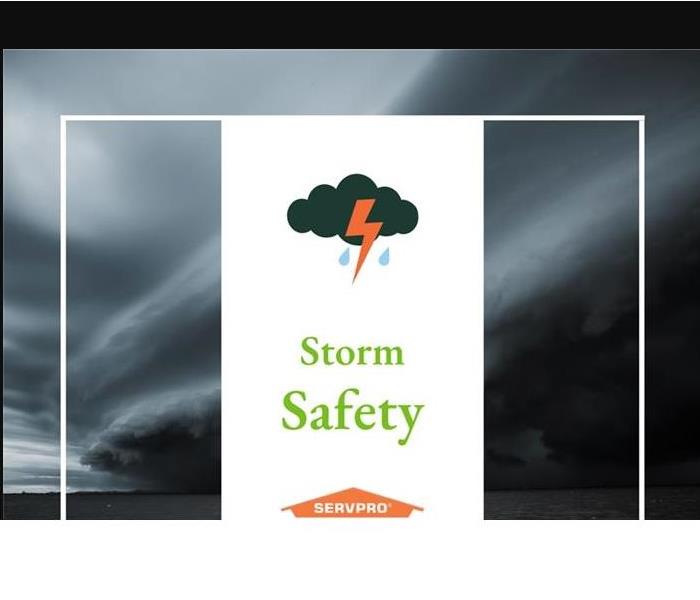 Practice Storm Safety and be Prepared
Practice Storm Safety and be Prepared
It feels like the weather changes almost instantly in North Florida! One minute it is hot and dry, the next minute a storm or hurricane is approaching the area. No matter what, we seem to get our fair share of rain consistently!
We had a friend get in trouble really quickly while driving during a flood watch/warning. Thankfully, emergency crews rescued her in time but her car was a total loss. She literally said it was seconds from when she attempted to drive through what she thought was a "shallow but big puddle" and the time her car began to fill with water. After that, she reminds me every time it starts to rain like it is right now.
Thinking of my friends and neighbors in our North Florida, I decided to go on Weather.GOV today and do some research as I watched the rain pour down. I found these really good tips to keep us and our loved ones safe during this rainy time. Please stay safe out there!
During a flood, water levels and the rate the water is flowing can quickly change. Remain aware and monitor local radio and television outlets. Avoid floodwaters at all costs and evacuate immediately when water starts to rise. Don't wait until it's too late!
- Stay Informed: Listen to radio and television, including NOAA Weather Radio if possible, check the Internet and social media for information and updates.
- Get to Higher Ground: If you live in a flood-prone area or are camping in a low-lying area, get to higher ground immediately.
- Obey Evacuation Orders: If told to evacuate, do so immediately. Lock your home when you leave. If you have time, disconnect utilities and appliances.
- Practice Electrical Safety: Don't go into a basement, or any room, if water covers the electrical outlets or if cords are submerged. If you see sparks or hear buzzing, crackling, snapping, or popping noises--get out! Stay out of water that may have electricity in it!
- Avoid Flood Waters: Don't walk through floodwaters. It only takes 6 inches of moving water to knock you off your feet. If you are trapped by moving water, move to the highest possible point and call 911 if possible. Do NOT drive into flooded roadways or around a barricade; Turn Around, Don't Drown! Water may be deeper than it appears and can hide hazards such as sharp objects, washed-out road surfaces, electrical wires, chemicals, etc. A vehicle caught in swiftly moving water can be swept away in 12 inches of water can float a car or small SUV, 18 inches of water can carry away large vehicles.
As you can tell, water can be extremely dangerous and it can quickly cause large amounts of damage. If floodwater enters your home, be sure to follow flood safety tips from the CDC, and then give SERVPRO of Columbia & Suwannee Counties covering more than five North Central Florida counties a call at (386) 754-0261.
2022 Atlantic Names for Hurricanes
6/16/2022 (Permalink)
The 2022 hurricane season is underway and the first named storm of the season is now behind us. Although tropical systems can form in any month of the year (and they have), the official hurricane season for the Atlantic basin runs from June 1 to November 30.
Tropical storms and hurricanes are named via a 6-year rotating list, standardized by the World Meteorological Organization. Representatives from hurricane-prone nations contribute names for the lists, which alternate between male and female. The letters Q, U, X, Y, and Z are not used.
There have been two changes to the list since 2016. Matthew was retired after causing almost 600 deaths and over $16 billion in damages. It has been replaced by Martin in the 2022 list. Otto caused substantial damage in Central America in November 2016, and will be replaced by Owen in 2022 and beyond.
If a hurricane season turns hyperactive with more than 21 named storms, the National Hurricane Center will then proceed to a supplemental list of names.
NOAA is expecting between 14 to 21 named storms with six to 10 hurricanes. Of those hurricanes, they anticipate three to six will become major hurricanes. CSU’s outlook predicts 20 named storms including 10 hurricanes, five of which they expect to be major hurricanes.
Those of us living in Florida always are hopeful for a quiet hurricane season and when we do have one coming are normally well prepared. For those of you new to Florida see a prior blog of ours about hurricane preparedness.
Facts About Tornadoes
6/15/2022 (Permalink)
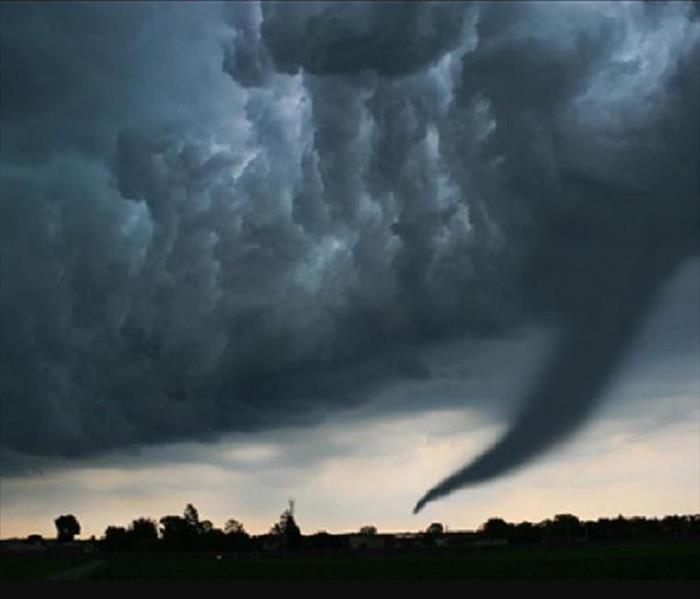 Don't let this catch you unprepared.
Don't let this catch you unprepared.
Tornadoes are one of the most powerful types of weather that can occur. What are tornadoes? Where do tornadoes hit? Why do tornadoes happen? Do you have as many questions about tornadoes as we do? Well, join us as we learn all about tornadoes.
Let’s get started with some fun facts and discover what tornadoes are, where tornadoes are most likely to happen and why tornadoes form!
- Tornadoes are formed from thunderstorms.
- Tornadoes are made of air.
- Tornadoes are measured with the Fujita Scale.
- Tornadoes have very high winds.
- Most tornadoes occur in Tornado Alley.
- Tornadoes can be created over water.
- A tornado has other names.
Here at SERVPRO in Lake City we feel like the more knowledge you have you can do things to protect and prepare for such a situation you might be in the path of a tornado. To stay safe during a tornado, prepare a plan and an emergency kit, stay aware of weather conditions during thunderstorms, know the best places to shelter both indoors and outdoors and always protect your head. Tornadoes continue to impact locations across the country every year, bringing massive winds and destruction in their paths.
The Dangers of Standing Flood Water From A Storm
6/10/2022 (Permalink)
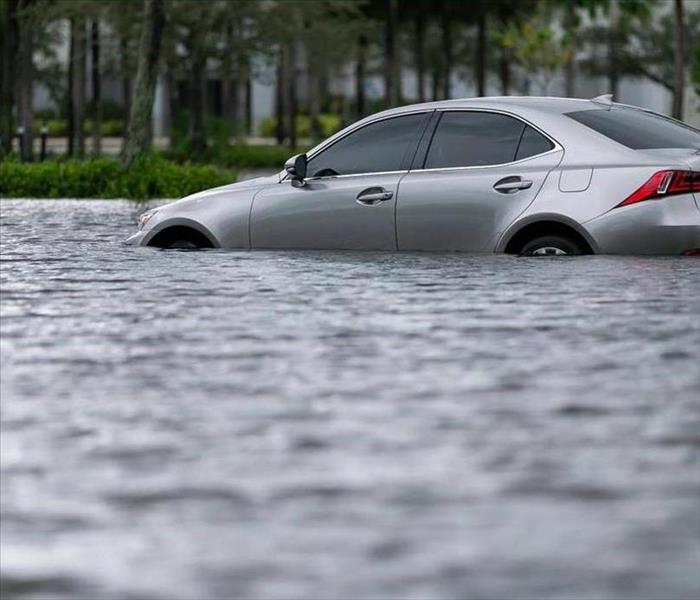 So many times you don't think water is this deep until it is too late! Turn Around, Don't Drown!
So many times you don't think water is this deep until it is too late! Turn Around, Don't Drown!
Storms and hurricanes devastate different regions every year. Unfortunately, some of the biggest dangers caused by storms can occur after the storm has already passed. In addition to a lack of supplies and road closures, the standing flood water resulting from storms can cause serious risks. According to the CDC here are some of the most severe problems floods can bring.
Health Effects
Standing flood water is teeming with risks. The CDC has a section detailing all of the possible risks that can become more likely in the event of a storm disaster. They recommend not to drink or eat anything that has been contaminated by standing flood water and to always wash hands as often as possible - especially before meals.
Physical Hazards
Murky water can conceal dangerous insects or even threatening animals beneath the surface. Much of this depends on the location of the storm, but it's not unheard of for alligators to make use of a new habitat resulting from a storm. In addition, much of the physical damage caused by a storm is still present in the water. This can include broken glass or sharp metal which might be impossible to see before it causes injury. On top of that, storms frequently cause damage to power lines. These can lead to a risk of electrocution in standing water. Flood water itself poses the possibility of causing drowning, whether people are in their cars or trying to swim across.
If you need storm damage repair or water damage cleanup, contact the team at SERVPRO of Columbia & Suwannee Counties today at 386-754-0261.
Preparing for a Tornado
6/10/2022 (Permalink)
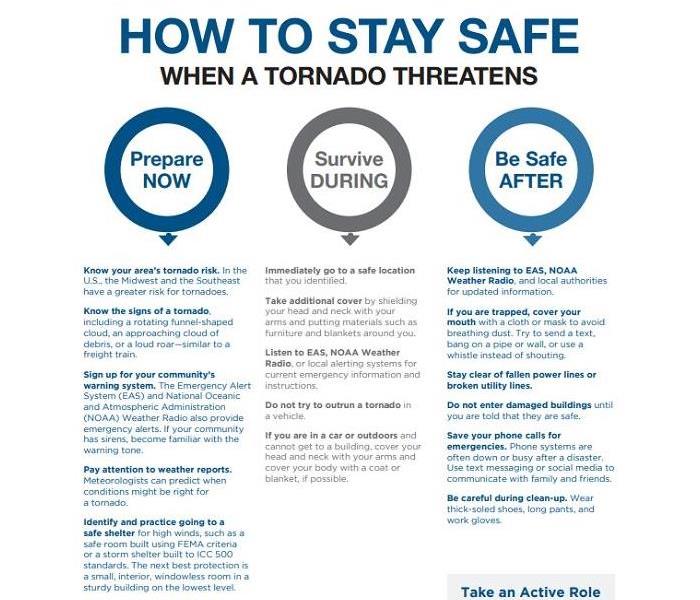 Preparing, Staying Safe & What Steps to Take After a Tornado if you have damage.
Preparing, Staying Safe & What Steps to Take After a Tornado if you have damage.
Knowing what to do when you see a tornado, or when you hear a tornado warning, can help protect you and your loved ones. During a tornado, people face hazards from extremely high winds and risk being struck by flying and falling objects. After a tornado, the damage left behind poses additional injury risks. Although nothing can be done to prevent tornadoes, there are actions you can take to protect your health and safety.
There are so many sources to assist in preparing you for what a tornado is, what to do if you hear or see one and how to deal with things afterwards. One source we utilized for our information is Ready.gov and things to do during the tornado such as stay away from windows, doors and outside walls. Don't go under a bridge or an overpass. Watch for flying debris. Go to the smallest interior room of your home or business and so on...
To get the updates and information about current weather conditions you can tune into a NOAA Weather Radio. On countless occasions NOAA Weather Radio-All Hazards has saved many lives. Currently, 98 percent of the population in the United States is covered by a NOAA Weather Radio-All Hazards transmitter.
SERVPRO of Columbia and Suwannee Counties is here to help afterwards if you need assistance cleaning up or repairing damage done to your home or business. You can reach us at 386-754-0261 24 hours a day, 365 days a year!
Are you prepared for hurricane season?
6/2/2022 (Permalink)
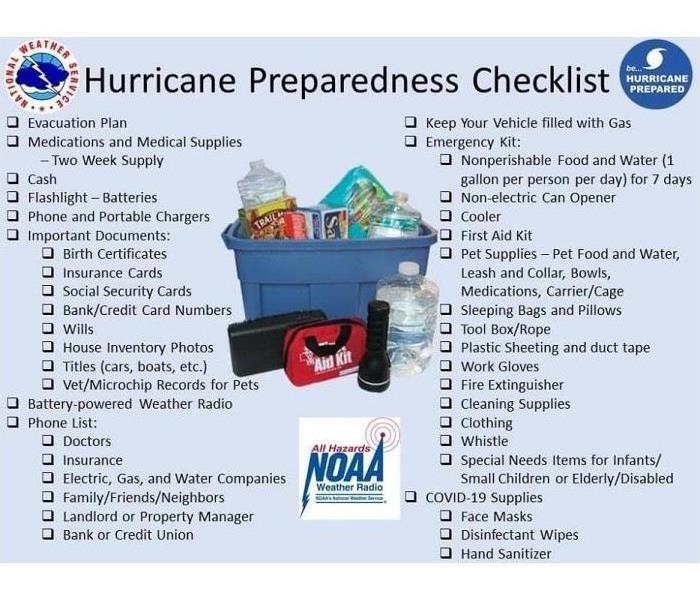 Hurricane Preparedness List
Hurricane Preparedness List
Are you prepared for hurricane season? Well, if not you need to get ready! It has arrived! Here's a checklist of items for severe weather and emergencies.
It is that time of the year where here in Florida we must all take a few minutes to be prepared for inclement weather, whether it be a hurricane, rivers overflowing, tornadoes or even just a potential really bad thunderstorm!
Be ready for hurricane season. There are so many things you can do TODAY! You can determine your personal hurricane risk, find out if you live in a hurricane evacuation zone, and review/update insurance policies. The NOAA has very valuable information regarding many of these items.
You can make a list of items to replenish hurricane emergency supplies and start thinking about how you will prepare your home for the coming hurricane season.
If you live in hurricane-prone areas, you are encouraged to complete these simple preparations before hurricane season begins!
SERVPRO is always available 24/7 if you have water damage and need assistance so please feel free to call us if you experience any type of water intrusion to your home as if you let it set, more damage can occur.
What to Do After Storm Damage, Repairs, Tips
7/1/2021 (Permalink)
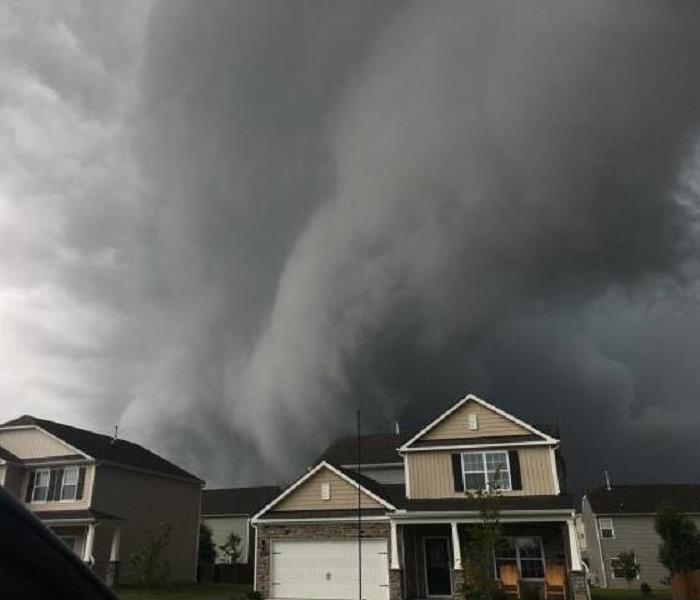 What to Do After Storm Damage, Repairs, Tips
What to Do After Storm Damage, Repairs, Tips
Knowing the right steps to take after storm damage can go a long way toward protecting you and your family, as well as your property and finances, from risks of further loss. As challenging as storms can be, learning the steps to take before a storm comes through and turns your life upside down will arm you with the knowledge you need to stay prepared. Here are some tips from the restoration and cleanup specialists at SERVPRO of Columbia & Suwannee Counties.
Five Things to Do After Storm Damage
You can mitigate some of the damage caused by a storm by following this checklist:
1. Check your home for damage.
While not all storm damage will be apparent immediately after the storm has passed, checking your home's condition will give you a clearer picture of the extent of the damage left by the storm.
SERVPRO of Columbia & Suwannee's experts provide a word of caution to take all the necessary safety precautions when checking your home since unexpected damage may cause injuries. Watch out for loose or exposed ceiling tiles or floorboards, broken electrical lines, and slippery floors. Fortunately, some safety tips can help:
- Avoid standing water
- Avoid checking for storm damage in the dark.
- Watch out for exposed nails, window damage, collapsed walls and roofing materials, and broken glass
- Switch off the electricity and shut off the main gas line before entering a damaged home
2. Assess the potential damage
During a storm, some areas in a home are more susceptible to damage than others. One site that is often vulnerable is the roof. Common signs of roof damage include:
- Split seams
- Dented, missing, or broken shingles
- Holes in the roof
- Leaks in the ceiling or roof
Other areas that are susceptible to storm damage include doors and windows. Inspect all windows for damaged frames, broken panes, cracks, and holes. Remember to board up any broken windows.
Also, assess your home's exterior, looking for damage such as dents, holes, cracks, and chipping to any brickwork, paint, or siding. The storm could have also damaged outdoor appliances such as air conditioning units.
Taking all the necessary precaution, be sure to remove debris from the gutters and roof, and then check that the downspouts are intact and unobstructed so they can continue diverting water away from your home. Remember to check for mold, which is common after flood damage.
3. Get in touch with your insurance carrier.
Document the damage and loss that has been caused by the storm, taking photos before removing or moving any objects or debris. Remember to document any additional costs incurred due to the loss, such as hotel receipts or other temporary living costs.
Once all this information is together, contact the insurance provider to determine whether your insurance plan covers the damage caused. Likewise, inquire about the steps to take to make a claim.
4. Attend only to the damage you are capable of handling.
In some cases, the storm might not have caused extensive damage, and you may be able to restore what little damage exists with a few repairs before seeking professional repair services. Prompt repairs can go a long way toward limiting the damage.
If that's the case, you should begin with what you can fix yourself, taking care not to cause additional damage. For example, if wind and water are getting into your home through a broken window, board it up as soon as possible. However, if you're not confident in your repair skills, it's best to get in touch with a company that can offer emergency repair services.
5. Choose the right contractor.
The next step is to hire a professional and trustworthy cleaning and restoration service company to restore your home to its former glory. Choosing a contractor that will promptly attend to your home's restoration, take care of water damage, and immediately mitigate the presence of potential mold is critical.
It's essential to ensure that your house is once again a habitable, healthy living environment. That will likely require water cleanup (flood cleanup) and mold removal by a specialized commercial cleaning service.
Getting Back to Normal
While storms can wreak catastrophic damages upon a home or commercial building, promptly addressing the storm damage—first, to make emergency patches and then to take care of longer-term restoration—will go a long way in getting your home or business back to normal.
Why SERVPRO?
SERVPRO is a leading storm damage restoration company that has served Fort Worth for upwards of 50 years. They can handle all aspects of the restoration process, from water removal to debris cleanup.
For more information about storm damage cleanup and restoration, contact SERVPRO of Suwannee Counties.
Storm Damage Restoration: What to Do After the Storm
6/8/2021 (Permalink)
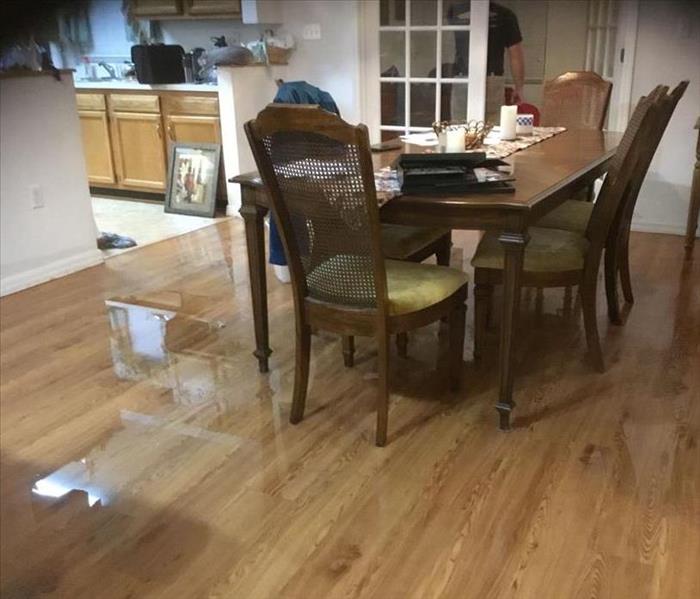 What to do after the Storm Comes through
What to do after the Storm Comes through
Storm Damage Restoration: What to Do After the Storm
“April showers” are sometimes much more than just a bit of rain. Spring weather can include a wide range of weather activity, such as severe storms with powerful winds that can cause serious damage. Or — heavy rainfall that leads to over-the-ground flooding, or even flooding from streams and rivers.
Severe spring weather can thus result in costly storm damage repair. So, when the storm is over, it’s important to know what to do, as well as what NOT to do. If you’ve experienced storm damage of any size, follow these key storm damage restoration tips.
Insurance
- Take photos of the damage and show them to your insurance agent as soon as possible.
- Homeowners insurance generally covers sudden, accidental damage.
- Let’s say there was a thunderstorm with high winds, and your roof suffered damage and is now leaking. Or, a tree falls onto your house and damages your roof. In these cases, your homeowners policy will typically cover the expenses.
- However, some homeowners policies may have windstorm and hail exclusions. That means your policy will not cover damage caused by those perils. To learn about any exclusions in your coverage, read your policy or talk with your agent.
- Also, flooding from natural disasters is generally not covered. For that, you will need separate flood insurance that you can get from The National Flood Insurance Program.
Automobiles
- Automobiles can easily be damaged by floodwaters, tree limbs, or falling debris.
- If an automobile is damaged, always notify your insurance agent.
- Cover broken windows if the car appears salvageable.
- List valuables in your car that have been lost or damaged.
For professional flood repair services, contact SERVPRO of Columbia & Suwannee Counties
Regardless of the circumstances — damage from storms or floods, fire, smoke, or mold, call SERVPRO. Our mitigation experts are standing by to provide storm damage restoration to return the property to a preloss condition. They are well-trained and use the latest state-of-the-art science. We can help you determine the full extent of the damage and perform services following industry standards and best practices.
How to Prepare for Hurricane Season
6/8/2021 (Permalink)
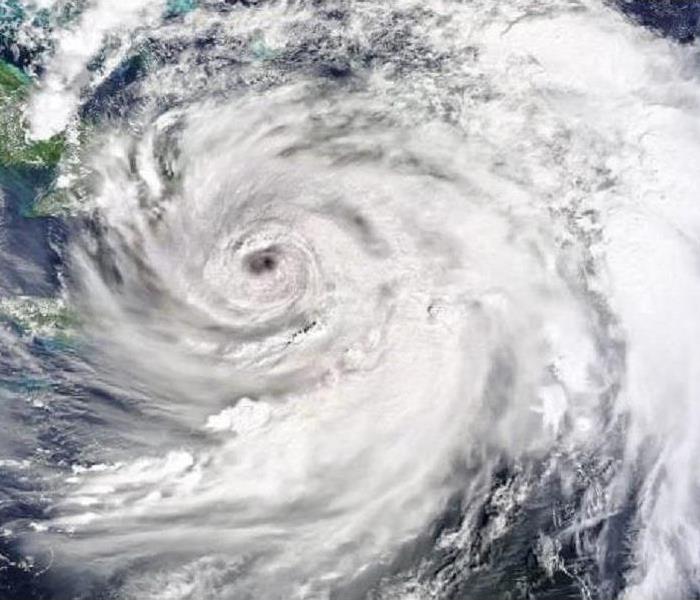 Hurricane Preparedness Tips
Hurricane Preparedness Tips
Officially, hurricane season starts on June 1 and ends on November 30. However, in the Eastern Caribbean and along the US East Coast, the peak season runs mainly from mid-August through mid-September. Hurricanes are powerful and unpredictable storms that can cause immense damages in their path. For you to stay safe and protect your property during a hurricane, preparedness is critical. Check out how to prepare for hurricanes and what to do during and after one.
Hurricane Preparedness Tips
Before the Hurricane
- Create an emergency kit. FEMA recommends packing the following items in your emergency kit:
- Water for drinking and sanitation to last at least three days;
- Non-perishable food for at least three days;
- Hand crank or battery-powered radio (tuned in to NOAA Weather Radio), as well as spare batteries;
- Flashlight with extra batteries;
- First aid kit;
- Whistle to call for help;
- Dust mask, plastic sheeting, and duct-tape for shelter making;
- Moist towelettes and garbage bags for sanitation;
- Pliers or wrench to turn off utilities;
- Can opener;
- Local maps;
- Cell phone with an extra charger.
- Learn your area’s flooding risk and community hurricane evacuation routes. Know the geographical location you live in.
- Create a family evacuation plan. Determine a meeting place for your family and routes to get there. Plan how to get in touch with your family if separated. Plan where you’ll go if you must evacuate, such as a shelter.
- If you don’t have flood insurance, get one now. Regular homeowners insurance policies don’t cover flood damage.
- Find out whether your property is flood-prone due to its elevation level.
- If there are levees and dams in your area, find out if they pose a hazard to you when the storm hits.
- Store copies of important documents, such as proof of ownership of any property in your emergency kit.
- Back up the data on your electronic devices to ensure it’s secure if your computer or other devices are damaged during the hurricane.
Secure Your Property:
- Secure your roof. Make your roofing and frames stronger by installing reinforcements, such as straps or clips. Also, secure loose shingles with heavy-duty adhesive and seal around your home’s chimney or vent pipes to keep water out.
- Maintain gutters and downspouts. Clean your gutters and downspouts regularly to prevent clogs. These could cause water damage to your home when the rain starts to pour. Also, ensure your gutters are firm and not sagging.
- Secure your windows. Strong winds can shatter your windows, leaving your home vulnerable. The best way to secure your windows is to install permanent storm shutters made of steel, aluminum, and other materials. Installing plywood is also a good defense for your windows. However, avoid taping as it doesn’t prevent the glass from breaking.
- Caulk your home. Caulking is a fast way to waterproof your house and reinforce vulnerable areas. Caulk around your windows and doors, the edges of your house, and around chimneys and other roof penetrations.
- Insulate the outside first floor walls with rigid foam or install plastic sheeting. It won’t stop all the water from getting in, but the insulation will keep out most of the silt.
- Reinforce your garage. To make it withstand powerful winds, secure your garage door with a brace kit rated for storm and hurricane winds. Other ways to strengthen your garage door are installing a metal post system or covering the door with metal panels, fabric screen, or 5/8-inch plywood.
- Trim trees and shrubs. Loose branches in your yard (and neighborhood) could be struck by powerful winds during a storm, damaging your house. So cut those dead or loose branches to safeguard your property.
- Secure loose objects. Your yard may also host things that could become projectiles in high winds. Tie-down and secure anything that could be swept up by winds, such as potted plants, lawn furniture, and dog houses. When a storm is imminent, bring light objects inside.
- Protect appliances from power outages. While you should unplug electrical devices during a powerful storm, it’s also ideal to purchase a surge protector. It prevents damage to your devices in case the power goes out.
- Move valuables to a higher floor. As electronics and appliances are susceptible to water damage, move them to a higher floor. If you can’t, at least raise them off the floor on concrete blocks.
- Use sandbags when a storm is hours from arriving. Pile up sandbags at least two feet high as an efficient barricade against floodwaters. If you don’t have sandbags, place heavy-duty garbage bags – filled one-third of the way with water – around your house doors.
- When a storm is hours from arriving:
- Ensure your car in good working condition and fill up the gas tank. If you’re going to evacuate, stock your vehicle with emergency supplies.
- Charge your cell phone to have a full battery if the power goes out.
- Turn your refrigerator to the coldest setting so that food lasts longer during a power outage.
- Be alert for the latest weather updates and emergency instructions.
During the Hurricane
- If authorities advise or order you to evacuate your area, take your emergency kit and leave immediately. Strictly follow posted evacuation routes and do not try to take shortcuts.
- If you are outside and the storm approaches, get indoors as soon as possible to avoid being hit by flying debris.
- If your home is on the low-lying ground or if you’re in a mobile home, go to the nearest safe place, such as a shelter.
- While indoors, stay away from windows, skylights, and glass doors. Find a safer spot to stay in, such as an interior room or a bathroom on the lower level.
- During the storm, winds and rain may damage electrical wiring; don’t use electrical appliances to avoid fire hazards and electrical shocks.
- If your home is at the risk of flooding, turn off electricity at the main circuit breaker. Don’t turn on electricity until local authorities have advised you to do so.
- Never use gasoline-powered or charcoal-burning devices inside to prevent carbon monoxide poisoning. Keep those devices outside.
- If trapped in a building that’s flooding, go to the highest level. However, don’t climb into a closed attic, as rising floodwater may trap you.
- Lightning is also a safety risk. Stay safe from lightning in your home during a storm by NOT using the shower, phone, or electrical equipment.
- Be aware that the eye of the storm may pass over your area, during which the storm will calm. However, the storm can start again without warning.
- Stay indoors until the local authorities have announced that the storm is over. Listen to the radio or turn on the TV (if safe, do so) to get the latest updates.
After the Hurricane
- Listen to authorities for information and special instructions.
- Never walk or drive on flooded roads or through the water. Just six inches of fast-moving water can knock you down, and one foot of moving water can sweep your vehicle away. Floodwater may also contain contaminants, dangerous debris, or downed power lines.
- Enter a damaged building only after a professional has inspected the electrical system, gas lines, and plumbing for damage.
- Take photos of any property damage and contact your insurance company for assistance. Wear protective equipment such as gloves, safety glasses, rubber boots, and masks when inspecting your home.
- Don’t touch wet electrical equipment, more so if you’re standing in water.
- Throw out food that has been exposed to floodwaters or has not been maintained at a proper temperature. When in doubt, throw it out.
- Don’t drink tap water if you’re not sure it’s safe.
For flood cleanup services, contact SERVPRO
Water damage in your property can still occur even if you have followed proper tips on preparing for hurricanes. After a flooding incident, everything that got wet in your property must be dried, cleaned, and disinfected immediately. For water removal services and mold cleaning services, contact SERVPRO immediately. Our team will arrive at your location promptly to avert further water damage and mold growth.
Roof Damage, Rising Water or Wind Damage - SERVPRO handles it all!
6/2/2021 (Permalink)
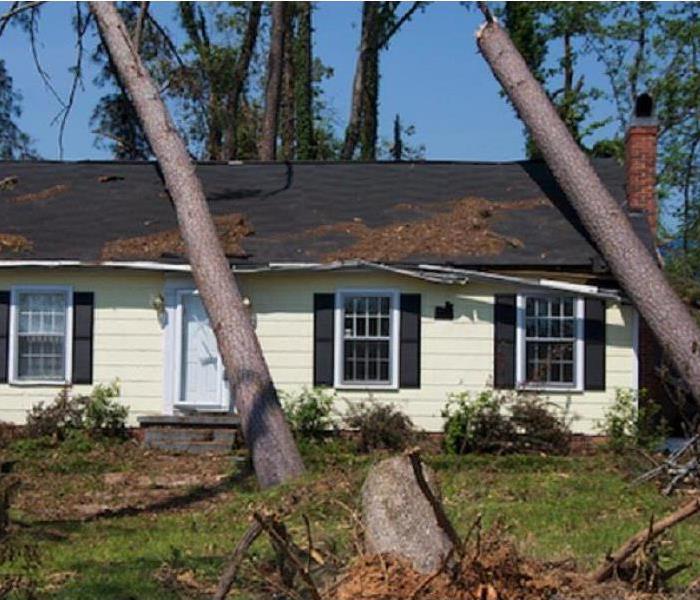 From the roof to rising water to wind damage.... call SERVPRO if it happens to you.
From the roof to rising water to wind damage.... call SERVPRO if it happens to you.
During a storm if you are taking shelter while the storm takes place you will need to be careful when vacating the safe area. Your homes structure could be jeopardized because of the strong winds, and if the rain drags out water might have invaded the structure. First thing you will want to do is make sure everyone is ok call first responders if needed, and then assess the property for damage.
A home hit by a storm could have many dangers present afterward. Things like exposed glass, nails and wood can be laying around. Possible gas leaks inside the home or outside. If your house has suffered storm damage and has a lengthy repair process, be selective about who you trust with the restoration process. What is the point of rebuilding your home just to have terrible craftsmanship, malfunctions and other nightmares?
Let SERVPRO assist you to make it "Like it never even happened." We service the areas to include Lake City, Jasper, Live Oak, Lake Butler, Chiefland, Lee, Greenville, Wellborn, and Madison just to name a few.
Preparing for A Nor'easter
6/2/2021 (Permalink)
 A Nor'easter is a storm along the East Coast of North America
A Nor'easter is a storm along the East Coast of North America
In some manners you will prepare for a Hurricane the same way. Being prepared is the most important part of any storm. Here are some steps and links to assist you in that preparation!
- Listen to a National Oceanic and Atmospheric Administration (NOAA) Weather Radio or to a local news station for the latest information.
- Follow instructions given by public safety officials. Many towns have email or phone distribution systems for emergency messages. Make sure you are on the list.
- Review your family emergency plan.
- If you live or work in a flood zone, hurricane evacuation zone, or an area that is prone to flooding be ready to evacuate. This requires an understanding of which roads experience flooding most often so you can have an alternate route in mind.
- If you are not in an area prone to flooding and plan on riding out the storm at home, gather adequate supplies in case you lose power and water for several days and are unable to leave.
- Prepare for power outages by charging cell phones and electronics (and portable cell phone chargers if you have them) and setting your refrigerator and freezer to their coldest settings. If you use electricity to get well water, fill your bathtub with water to use for flushing toilets. Gather adequate supplies in case you lose power and water for several days and are unable to leave.
- Keep your car’s gas tank full. Pumps at gas stations may not work during a power outage.
- Prepare your home.
- Secure or bring in outdoor objects (patio furniture, children's toys, trash cans, etc.) that could be swept away or damaged during strong winds or flooding. This includes grills! Despite their size and weight, strong winds can knock over grills causing gas lines to be severed. Fire departments across Florida responded to numerous calls for ruptured grill supply lines during storms.
- Clear clogged rain gutters to allow water to flow away from your home.
- If damaging winds are expected, cover all of your windows. If you don’t have storm shutters, board up windows with 5/8” exterior grade or marine plywood.
- Go Tapeless! Taping windows wastes preparation time, it does not stop windows from breaking or make cleanup easier. In fact, taping windows may create larger shards of glass that can cause serious injuries.
- Turn off propane tanks if you are not using them.
- Prepare for flooding by elevating items in your home, unplugging sensitive electronic equipment, clearing nearby catch basins and parking vehicles in areas not prone to flooding.
- If instructed, turn off your gas and electricity at the main switch or valve.
- If you have a boat, remove it from the water. If you cannot, prepare your boat for the storm to reduce damage.
Always have your insurance company & SERVPRO of Columbia and Suwannee phone numbers in your cell phone so you can reach us, if necessary, to assist you with damage that might occur.
Prepare for Flash Floods: Your Guide to Stay Safe and Clean Up Effectively
6/2/2021 (Permalink)
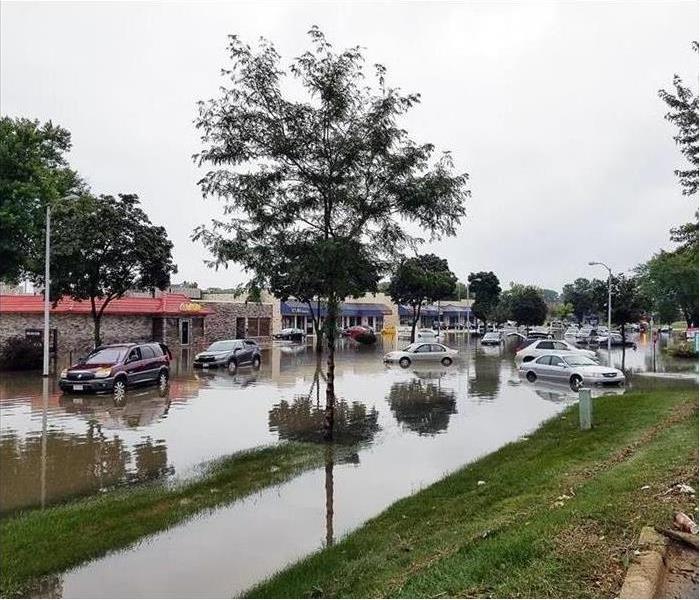 Turn Around, Don't Drown!
Turn Around, Don't Drown!
Flash floods can be devastating and dangerous, and oftentimes there is no warning.
As a leader in cleanup and restoration services in the North Central Florida area, our team here at SERVPRO has seen how damaging a flash flood can be. We want to help make sure everyone in this community will be prepared.
Causes of Flash Floods
Flash floods typically happen when there’s a sudden storm, and the ground soil can’t absorb all the water that’s quickly streaming in.
The most common causes of flash flooding include:
- Rain for an extended time (e.g. during a tropical storm or hurricane)
- Sudden heavy rain in a short time span
- Dam failures
- Rapid thawing of snow build-up
- Overflow in man-made sewers and storm drains
Flash Flood Safety
It’s important to understand the difference between a flood warning and a flood watch:
- Flood Warning – a flood is expected within 30 minutes to an hour
- Flood Watch – the conditions are right for a flood, and you should continually check to see if a Flood Warning develops
If a flood warning is issued, you probably won’t have much time to take action, so it’s important to be prepared and know what to do:
- Pay attention to instructions from local authorities – there may be a mandatory evacuation or a recommended evacuation to designated shelters or areas.
- Protect your home – if there is no need to evacuate, be sure to secure your home by closing all windows and doors and staying up high away from possible flooding.
- Pay attention to water sources – if you find yourself near any bodies of water, from oceans to rivers to lakes to streams, keep a close eye on water levels and be prepared to leave if necessary. Storm drains or drainage ditches could also cause problems.
- Avoid driving and walking through flooded areas – many flood-related deaths are the result of people who are trapped in the cars or swept away by the flood waters.
Flash Flood Cleanup
To cleanup after a flash flood, you want to make sure to remove all the water and dry the affected area as quickly as possible. Whether you hire professional cleanup and restoration services or can manage the cleanup work yourself, the process typically involves the following steps:
- Removing all standing water
- Properly disposing damaged materials
- Quick-as-possible drying and dehumidifying
- Cleaning and disinfecting
- Rebuilding and restoring
After a flash flood, it’s important to dry the affected area as soon as possible in order to minimize the extent of the water damage. This is why many people turn to experts like SERVPRO of Columbia & Suwannee Counties, as we guarantee fast, thorough cleanups with our expertly trained technicians and advanced professional-grade equipment. We’ll even help you work with your insurance.
Are you Prepared for 2021's Hurricane Season?
5/24/2021 (Permalink)
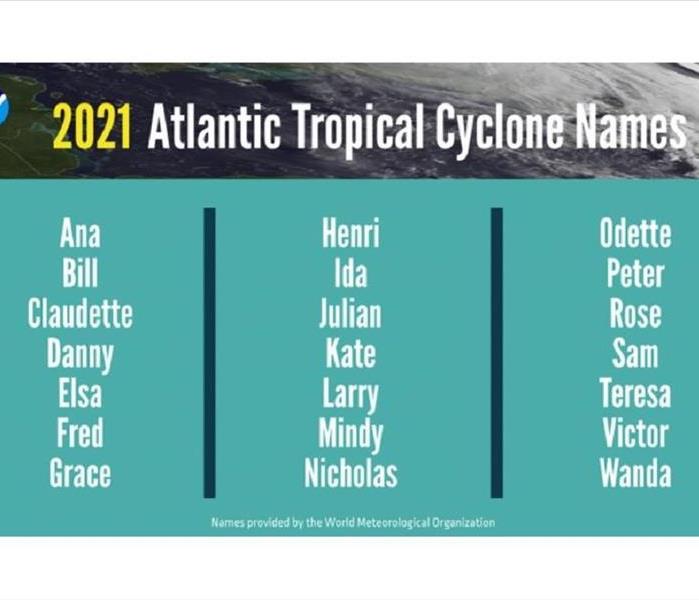 Before any of these names come see us let us help you get prepared!
Before any of these names come see us let us help you get prepared!
NOAA’s Climate Prediction Center is predicting another above-normal Atlantic hurricane season. Forecasters predict a 60% chance of an above-normal season, a 30% chance of a near-normal season, and a 10% chance of a below-normal season. However, experts do not anticipate the historic level of storm activity seen in 2020.
“Now is the time for communities along the coastline as well as inland to get prepared for the dangers that hurricanes can bring,” said Secretary of Commerce Gina Raimondo. “The experts at NOAA are poised to deliver life-saving early warnings and forecasts to communities, which will also help minimize the economic impacts of storms.”
Last year’s record-breaking season serves as a reminder to all residents in coastal regions or areas prone to inland flooding from rainfall to be prepared for the 2021 hurricane season.
You can use our ERP to help you plan and prepare. If you need assistance you can reach us at 386-754-0261. Keep SERVPRO of Columbia & Suwannee Counties in mind if you need our services. Specializing not only in flood, water, sewer, mold and fire cleanup we can help you PREPARE!
Helping in Texas! ONE TEAM
2/25/2021 (Permalink)
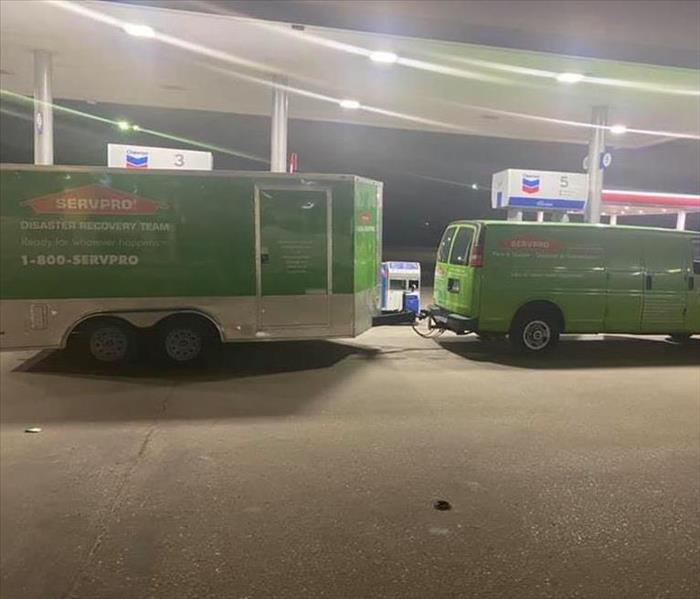 Heading to Texas! SERVPRO = ONE TEAM
Heading to Texas! SERVPRO = ONE TEAM
So many residential and commercial customers are in need right now over many states. We received the call from our Storm Team headquartered from Alabama to disperse towards Texas so we did! We always want to assist other SERPVRO franchises in helping as many customers as we are able too!
Thankful for volunteers to drive additional equipment all the way from Florida to Texas, thankful for SERVPRO of Jacksonville Beach/Ponte Vedra letting us use their trailer loaded down with equipment and so very thankful to our staff that is already there and working since last Saturday around the clock!
Thankful for our staff here at SERVPRO of Columbia & Suwannee Counties for working hard to keep our customers here at home taken care!
WE ARE ONE TEAM!!
Weather Updates
9/8/2020 (Permalink)
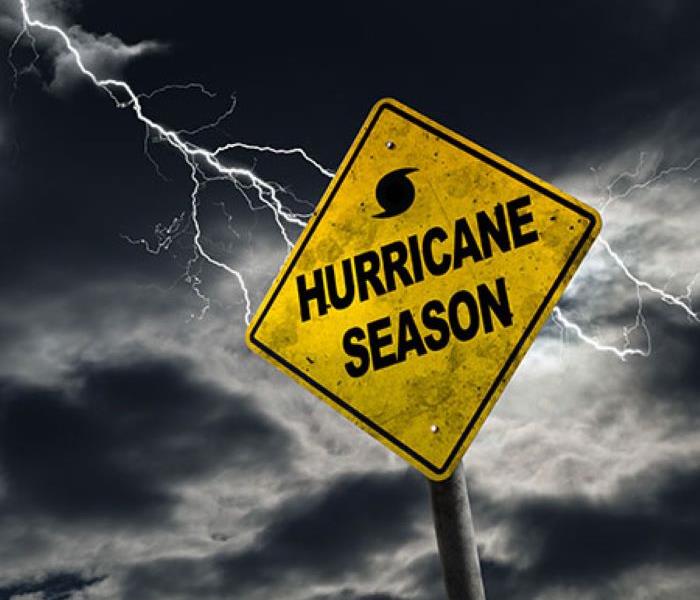 ARE YOU READY FOR THE STORM?
ARE YOU READY FOR THE STORM?
As Floridians we have learned to always be knowledgeable of ongoing weather. From lightning to hurricanes it is always advisable to be informed at all times and know what precautions to take.
We learn at an early age how dangerous weather can be and how to smartly respond to any ongoing or upcoming weather factors to keep ourselves safe and out of harms way.
May of us use the local news, radio or social media to keep up. We here at SERVPRO of Columbia & Suwannee Counties recommend to use the NOAA (National Oceanic and Atmospheric Administration) website.
This website/link will keep you up to date and informed of any upcoming storm possibilities that might require advanced planning to keep everyone safe.
No one is every "ready" for a Hurricane to damage their home or business, however, you should be ready to evacuate if necessary and know how to prepare your home or business to the best of your ability.
Saharan Dust
7/2/2020 (Permalink)
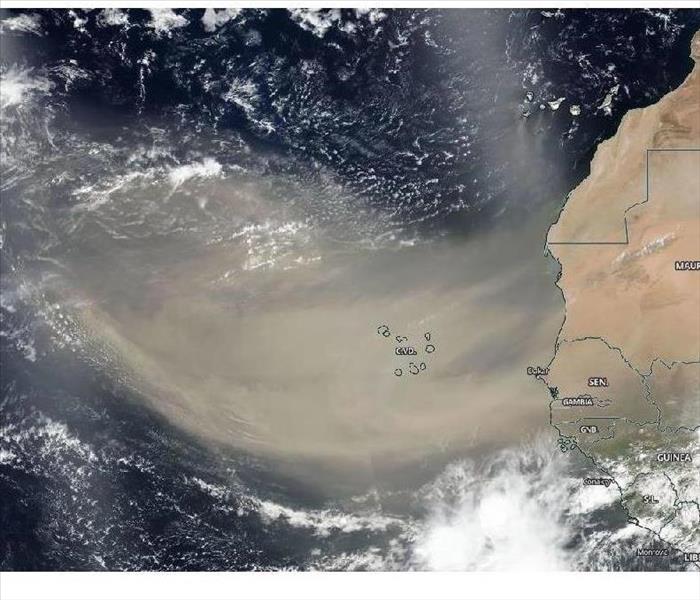 Saharan Dust off the coast of Africa
Saharan Dust off the coast of Africa
SERVPRO of Columbia and Suwannee Counties likes to keep you informed on the coming storm season and changes that could happen to it. As we all know, storms are unpredictable especially when other factors come into play that may cause less storms during a season but more powerful storms.
This is where the Saharan Dust come into play. Personally, I had not heard of the Saharan Dust until just a few weeks ago, but natural phenomenon attract my attention so I began to do some research. Saharan Dust travels across the Atlantic Ocean to different parts of the world. Every so often, particularly during the warmer months, blankets of the dust are carried by strong winds from the Sahara Desert in Western Africa to Trinidad and Tobago, Grenada and Barbados.
This years Saharan Dust is what's being called a "Godzilla" cloud. I have linked an article below with more information on the Saharan Dust and how it is also affecting the view of the sunrise and sunset.
https://www.usatoday.com/story/news/nation/2020/06/22/saharan-dust-heads-u-s-bringing-sunsets-and-fewer-tropical-storms/3235299001/
Hurricane Seasons around the world
6/2/2020 (Permalink)
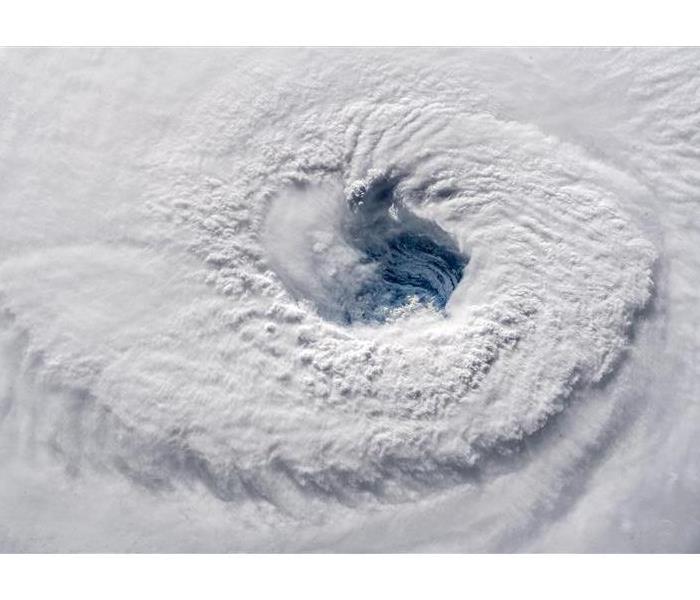 Hurricane from space
Hurricane from space
A hurricane season is a distinct time of year when tropical cyclones (tropical depressions, tropical storms, and hurricanes) usually develop. Whenever we mention hurricane season here in the U.S. we're usually referring to the Atlantic Hurricane Season, whose storms most commonly affect us, but ours isn't the only season there is...
Hurricane Seasons Around the World
Besides the Atlantic hurricane season, 6 others exist:
- the Eastern Pacific hurricane season
- the Northwest Pacific typhoon season
- the North Indian cyclone season
- the Southwest Indian cyclone season
- the Australian/Southeast Indian cyclone season
- the Australian/Southwest Pacific cyclone season
While each of the above basins has its own particular seasonal patterns of tropical cyclone activity, activity tends to peak worldwide in late summer. May is typically the least active month, and September, the most active.
Hurricane Season Predictions
Several months before the season starts, several well-known groups of meteorologists make predictions (complete with guesstimates of the number of named storms, hurricanes, and major hurricanes) about how active the upcoming season will be.
Hurricane forecasts are usually issued twice: initially in April or May in advance of the June season start, then an update in August, just before the historical September peak of hurricane season.
- The NOAA releases its initial outlook the week prior to the June 1 season start.
- Colorado State University's Department of Atmospheric Sciences has been making and publicizing their tropical forecasts since 1984.
- Tropical Storm Risk (TSR) (a consortium of insurance, risk management, and climate forecasting experts based out of University College London in the UK), first introduced its tropical cyclone forecasts in the late 90s and early 00s.
- The Weather Channel is considered a relative newbie to the hurricane forecast arena.
Think Ahead for This Hurricane Season
6/1/2020 (Permalink)
 ARE YOU PREPARED THIS SEASON?
ARE YOU PREPARED THIS SEASON?
With Hurricane Season starting June 1st, now is the time to think ahead and get ready.
Did you know that many people believe that hurricanes are just a threat to coastal communities? The truth is that high winds, flooding, and potential tornadoes can reach residents many miles inland. For this reason, it is important everyone thinks as far ahead as possible to get ready for the upcoming hurricane season. When you are prepared and the time comes to spring into action, you will be more calm and confident because you already have a plan in place.
One thing that should be at the top of your list is learning your evacuation zones. Evacuations are more common that people think, and when you know your evacuation zone you will be ahead of the game. Also have a communication plan with any extended family members in case you need to meet somewhere.
Another thing that should also be added to your list is to check in with your insurance company. Make sure you know in advance what your deductibles are and what all (inside and outside) is covered. This includes the personal belongings in your home as well.
Now let’s get down to the nitty-gritty. To really think ahead you need to make sure you have your emergency supplies on hand, as well as prepare your house.
It’s never too early to stock up on emergency supplies, and the sooner you get them, the better. These supplies should include:
- Water, one gallon per person per day (three-day minimum)
- Food, a three-day supply of no-cook foods
- Any medications you or any family members will need (of course a three-day minimum as well)
- Flashlights with extra batteries
- Hand-crank or battery-powered radio with extra batteries
- First-aid kit
- Cellphone charger with a backup battery or portable charger
Last, but not least, let’s get your home ready. Here is what we recommend:
- Trim or remove any damaged trees or limbs to keep your property safe. Hurricane winds can cause trees and branches to fall or be thrown. If you have any loose limbs, the higher the winds the higher the chance of them damaging your home or a neighbor’s home.
- Secure rain gutters and clean out any clogged areas or debris to prevent water damage to your home.
- Secure and reinforce your windows and doors, including the garage doors. This can be done with the help of hurricane screens.
- Have a power backup plan! You can do this by purchasing a portable generator or installing a generator.
- If possible, consider building a safe room or storm shelter to protect you from high-winds, but this is best done in locations above flood levels.
Your #1 goal is to keep your family safe, second is your home or business. Here at SERVPRO of North Clay County/Oakleaf/North Middleburg our goal is to be "Here to Help" if your home or business is affected and get you back to normal as quickly as possible.
NOAA Predicts an Above-Normal 2020 Atlantic Hurricane Season
6/1/2020 (Permalink)
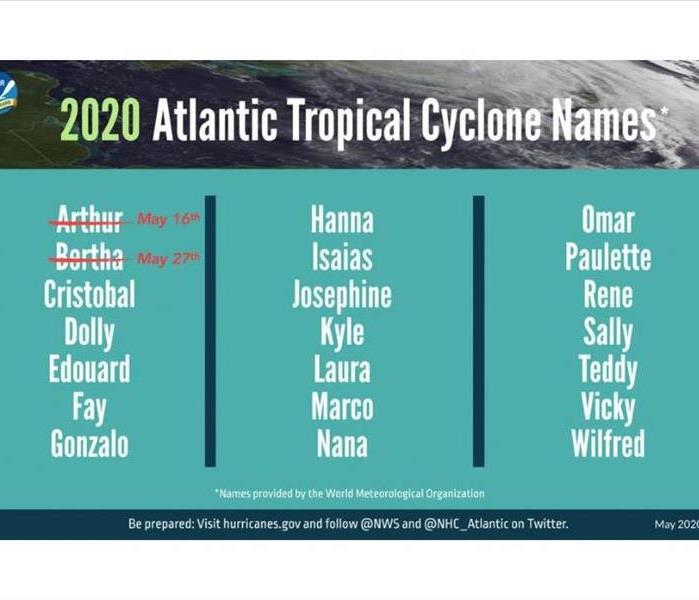 2020 Looks to be a busy season for Hurricanes
2020 Looks to be a busy season for Hurricanes
June 1st marks the official start of the 2020 Atlantic Hurricane Season which will continue through November. On May 21st, the National Oceanic and Atmospheric Administration (NOAA) published their outlook for the 2020 Atlantic hurricane season. NOAA predicts that the 2020 Atlantic basin hurricane season will be above-normal.
Forecasters predict a 40% chance of a near-normal season, a 60% chance of an above-normal season, a 30% chance of a near-normal season, and only a 10% chance of a below-normal season.
The 2020 outlook reflects several climate factors that are conducive to increased hurricane activity, including the ongoing high-activity era that has been in place since 1995. Forecasters are predicting ENSO neutral or La Niña conditions, along with warmer-than-average sea surface temperatures in the tropical Atlantic Ocean and Caribbean Sea, coupled with reduced vertical wind shear, weaker tropical Atlantic trade winds, and an enhanced west African monsoon.
The 2020 outlook reflects several climate factors driving the strong likelihood for above-normal activity in the Atlantic. El Nino Southern Oscillation (ENSO) conditions are expected to either remain neutral or to trend toward La Nina, meaning there will not be an El Nino present to suppress hurricane activity. Also, warmer-than-average sea surface temperatures in the tropical Atlantic Ocean and Caribbean Sea, coupled with reduced vertical wind shear, weaker tropical Atlantic trade winds, and an enhanced west African monsoon all increase the likelihood for an above-normal Atlantic hurricane season. Similar conditions have been producing more active seasons since the current high-activity era began in 1995.
For 2020, NOAA predicts a likely range of 13 to 19 named storms (winds of 39 mph or higher), of which 6 to 10 could become hurricanes (winds of 74 mph or higher), including 3 to 6 major hurricanes (category 3, 4 or 5; with winds of 111 mph or higher). NOAA provides these ranges with a 70% confidence. An average hurricane season produces 12 named storms, of which 6 become hurricanes, including 3 major hurricanes.
With all of this in mind, remember, SERVPRO is here alongside you. We take the same precautions each of you do. We pray for the safety of our communities and are "Here to Help" if help is needed.
SERVPRO is ready to deal with any size storm damage
3/20/2020 (Permalink)
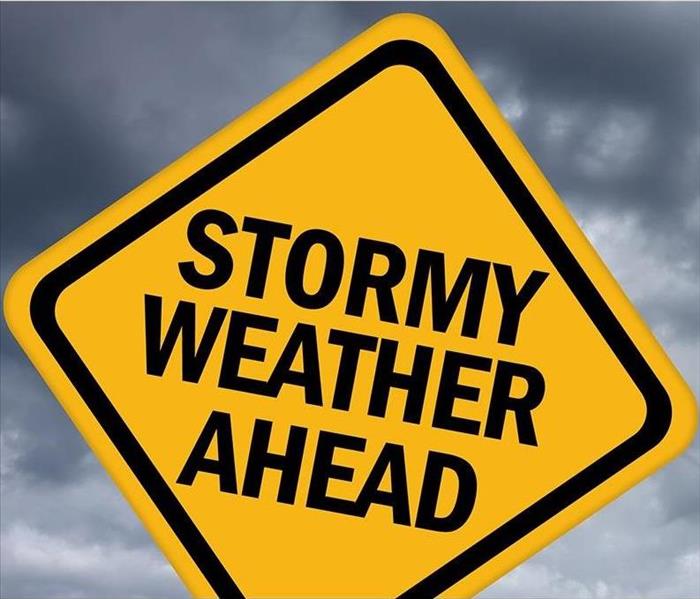 Stormy weather ahead
Stormy weather ahead
When heavy rains and high winds hit hard, property destruction and loss can be devastating to you as a homeowner. Structural damage to the exterior of your home is followed by interior devastation from water and winds. Storm damage is rarely isolated to just a few buildings in an area adding the challenge of finding a restoration company that can respond swiftly to your needs to an already anxiety provoking situation. SERVPRO of Columbia and Suwannee Counties delivers the help you need swiftly even when a local disaster is widespread as we are able to call upon a network of over 1,650 franchises nationwide to respond if the need is great.
Storm damage in our surrounding areas such as Lake City, Live Oak, Perry, Starke, McClenney, Chiefland and Fort White can feel overwhelming, but your fear and panic will disappear when our team of professionals responds to your water, wind and flooding repair and restoration needs. Your particular situation is of paramount importance to us, and you need not worry that your repairs and restoration will take a back seat even when many in your area are struggling to recover from the same issues you face. Choosing our company puts in motion a vast support system, but our local ownership means you will receive a personalized approach to your particular situation, efficiently returning your home back to its pre-storm condition just “Like it never even happened.”
SERVPRO Storm Response
2/14/2020 (Permalink)
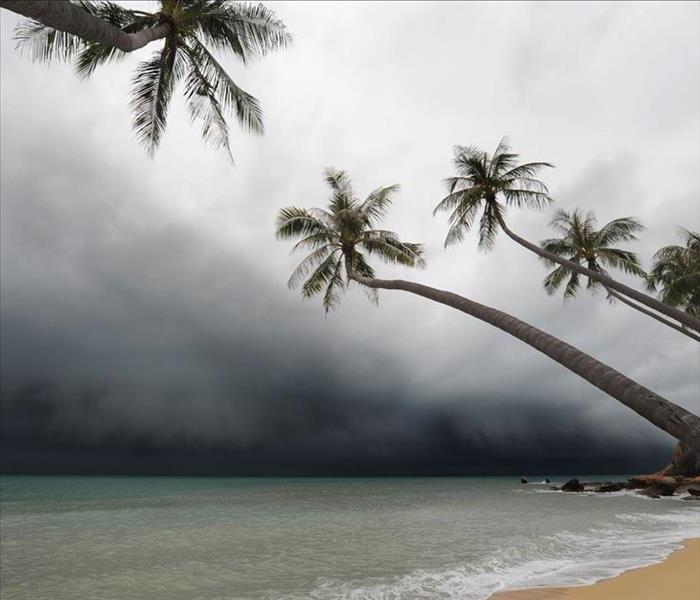 Any type of storm, we are here to help!
Any type of storm, we are here to help!
SERVPRO Storm Response
The team here at SERVPRO of Columbia & Suwannee Counties is ready for whatever happens, no matter the time - night or day. When it comes to fire & water damage, our professionals work endlessly to make sure our customers are happy and that we walk them through each step of the cleaning process.
We're Highly Trained Storm Damage Specialists
As leaders in the storm and water damage industry, we have advanced training and expertise, not to mention a tremendous amount of hands-on experience. We use this training and experience to quickly dry your home and restore it back to pre-storm condition.
We're Quick to Any Size Disaster
When a storm hits your home or business, you need help immediately. Our quick response will help prevent secondary damage and help reduce restoration costs.
We Have the Resources to Handle Storms and Disasters
We can access the resources and personnel of 1,700 Franchises to handle major storms and disasters. We also have access to special Disaster Recovery Teams strategically located throughout the country to respond to catastrophic storms and events.
Locally Owned and Operated
SERVPRO of Columbia & Suwannee Counties is locally owned and operated, so we are part of this community too. When you have a storm event or flooding emergency, we are in the area and ready to help.
Have Storm or Flood Damage?
Call SERVPRO of Columbia & Suwannee Counties today (386)754-0261
Prepare for Rain - The Right Way
1/8/2020 (Permalink)
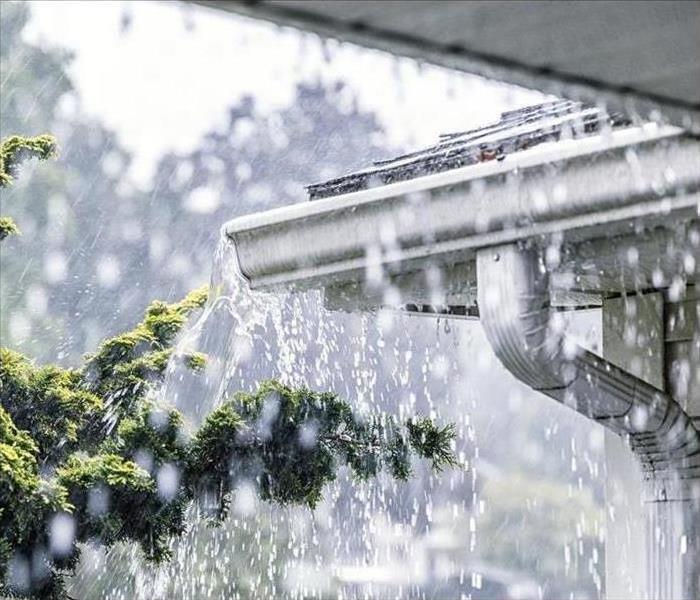 Rain Heavily Falling and Gutters Overflowing with Rain Water
Rain Heavily Falling and Gutters Overflowing with Rain Water
Living in Florida there is always that chance of heavy rain storms coming our way. SERVPRO of Columbia & Suwannee Counties has worked on multiple projects that were due to the surplus of rain. The most memorable one being 2012 during Tropical Storm Debbie. With almost 30 inches of rain in a short time we had several people call us at all hours of the day and night due to leaks caused by the rain. Sometimes these leaks are unavoidable, but we want to make sure you are prepared for the next storm.
There are various forms of getting prepared for rainy weather but for the most part normal maintenance will keep your home or business safe from heavy rain.
Here are some tips to avoid rain damage.
- Plant shade trees or palm trees at least 20 feet away from your home.
- If you have gutters, make sure they are clean.
- Ensure there are no leaks on your roof.
- Check for damage on your home or business and repairs are needed.
- Weatherstrip windows and doors.
- Have your trees trimmed.
Hurricanes, cyclones and typhoons - What is the Difference!
1/8/2020 (Permalink)
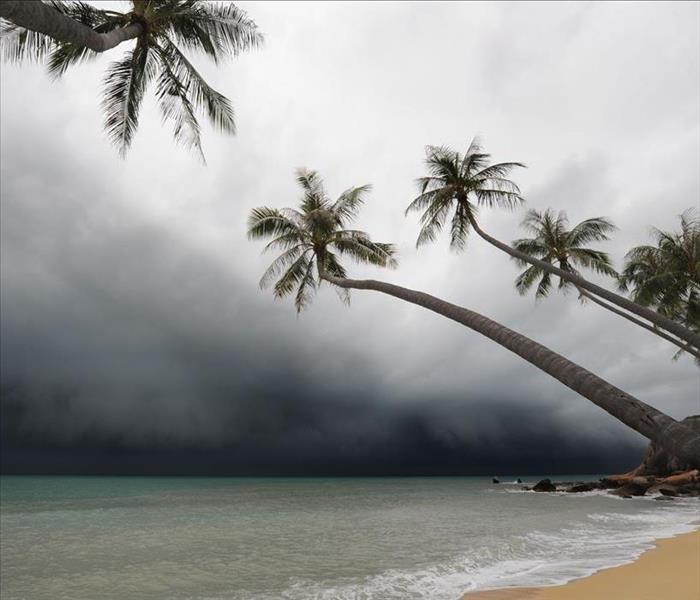 Typhoon Coming on Land
Typhoon Coming on Land
Through out our life time we may have heard these three names for storms. Hurricanes, cyclones, typhoons and tropical storms. So what is the difference between all these?
Well, here is a quick guide:
Hurricanes are tropical storms that form over the North Atlantic Ocean and Northeast Pacific.
Cyclones are formed over the South Pacific and Indian Ocean.
Typhoons are formed over the Northwest Pacific Ocean.
Tropical Storms a localized, very intense low-pressure wind system, forming over tropical oceans and with winds of hurricane force.
So which would you be most likely to come in contact with in your area? Here in Florida Hurricanes & Tropical Storms due to the warm water in the Gulf of Mexico & Atlantic Ocean. Remember, regardless of the storm, SERVPRO of Columbia & Suwannee County located here in Lake City is ready to handle any situation! We also cover Lake Butler, Jasper, White Springs, Fort White, Madison, Perry, MacClenney and surrounding counties.
Prepared for A Storm?
12/13/2019 (Permalink)
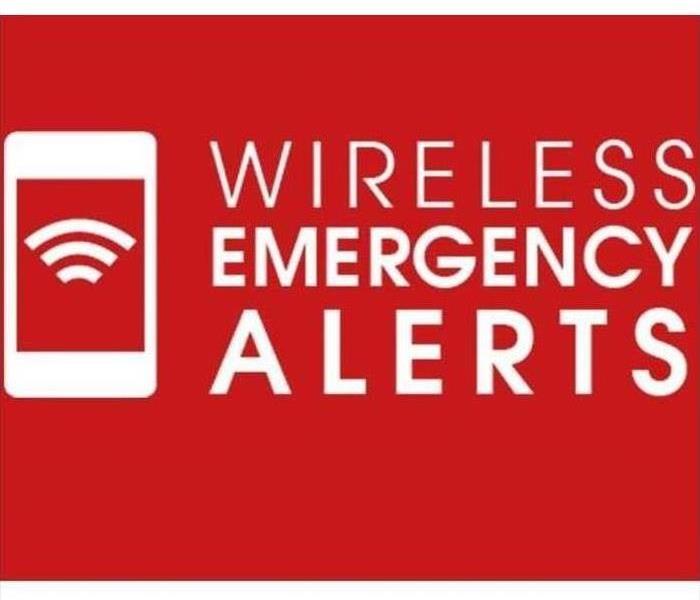 Be Ready! SERVPRO of Columbia & Suwannee Counties is faster to any size Disaster, Call us today 386-754-0261
Be Ready! SERVPRO of Columbia & Suwannee Counties is faster to any size Disaster, Call us today 386-754-0261
Wireless Emergency Alerts (WEAs) are free notifications delivered to your mobile device as part of a public safety system provided by authorized government-alerting authorities. The alerts are designed to inform you of imminent threats to safety or missing persons alerts in your area (e.g., AMBER Alerts). Government partners include local and state public safety agencies, FEMA, the FCC, the Department of Homeland Security, and the National Weather Service. A WEA can be sent to your mobile device when you may be in harm’s way, without downloading an app or subscribe to a service. WEAs may be used to share extreme weather warnings, local emergencies requiring evacuation or immediate action, AMBER Alerts, and Presidential Alerts during a national emergency.
A WEA will look like a text message. The WEA message will typically show the type and time of the alert, any action you should take, and the agency issuing the alert. The message will be no more than 90 characters.
This can be a life saver and ensure your getting timely updates when necessary!
Steps to take after the Hurricane
9/19/2019 (Permalink)
When returning to your home or business after the storm do you know what to do?
To help home and business owners take the right first step, the IICRC has pulled together a list of post-hurricane resources including property damage FAQ's, homeowner tips and advise on identifying the 'good guys' from the 'storm chasers.' Visit the link here https://www.IICRC.org/page/IICRCResources?utm_source=170&utm_medium=217&utm_campaign=356&utm_term=405&utm_content=1814
SERVPRO utilizes resources and training from the IICRC in many occasions. They provide the training for our staff in areas such as water mitigation, carpet cleaning, fire damage cleaning, mold remediation and so on.....
Here at SERVPRO of Columbia & Suwannee Counties we pride ourselves in keeping up to date in an industry that is continually changing.
Hurricane Dorian - what to do if you sustain damage
9/4/2019 (Permalink)
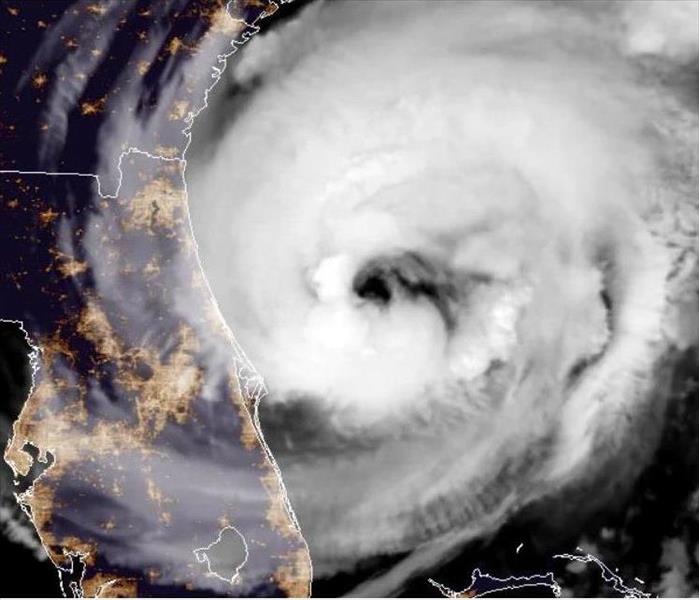 Live Radar of Hurricane Dorian
Live Radar of Hurricane Dorian
While hurricane force winds are not likely in our area, property owners in our area may experience downed limbs and trees. Should your property sustain damage from the wind or flooding, we advise the following:
People First - take care of your family, friends and neighbors. People are more important than property. Check on your neighbors once the winds die down.
Make Temporary Repairs and Document - take pictures, save receipts and do what you can to prevent further damage. Most home and dwelling insurance policies will reimburse you for reasonable temporary repairs, such as hiring a contractor to remove a tree from your roof, putting a tarp on your roof, etc.
Avoid Scams - avoid repair scams from out of town contractors by calling us first. Homeowners should resist the temptation to sign up with the first repair crew that shows up at the doorstep, and especially should not sign paperwork that includes an Assignment of Benefit clause. We will help you understand your coverage and will report your claim for you. A good source of information about reputable contractors is the Columbia County Builders Association.
SERVPRO is here to help! Call our local office at 386-754-0261 and we will be happy to assist in any way possible.
Are you ready?
7/15/2019 (Permalink)
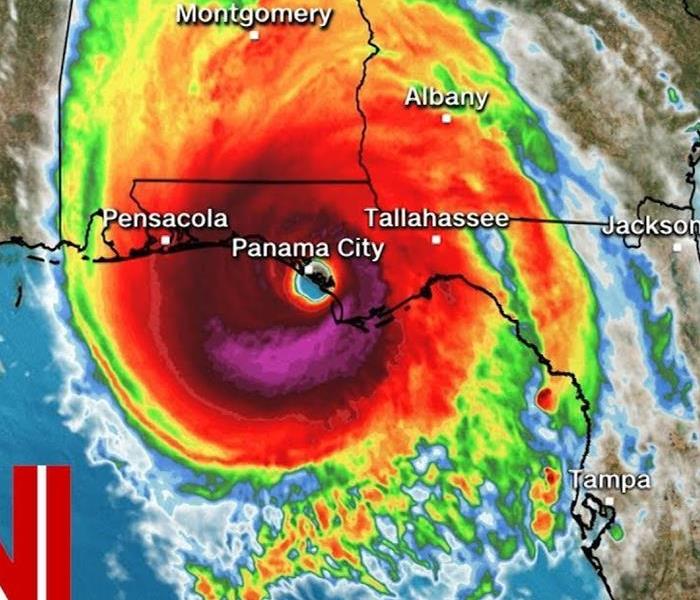 Let's be Prepared if this Happens Again
Let's be Prepared if this Happens Again
Hurricanes generate a series of threats to lives and property. The most obvious is the threat posed to buildings, equipment, and people by the high winds which characterize such storms.
This checklist will help you prepare for a hurricane’s effect on your business, employees and community by highlighting activities you should undertake before, during, and following the event. When the National Oceanic and Atmospheric Administration’s National Hurricane Center issues a watch or warning, use the time available to begin taking the following steps.
https://www.sba.gov/sites/default/files/HurricanePreparednessSBA.pdf
The National Weather Service rates hurricanes by their intensity, using a scale of one to five. The scale categorizes storms according to their sustained winds, the storm surges produced, and expected damage. Businesses located within areas of risk should have a hurricane preparedness plan. It is a good idea to develop a plan of action for your business and your staff to be ready for this type of interruption
Here at SERVPRO of Columbia and Suwannee Counties we want to be prepared and understand what we are facing. We hope the attached check list helps you be prepared. If you need assistance after the fact know you can depend on SERVPRO to be there when you need us.
Hurricane Preparedness - Be Ready
6/5/2019 (Permalink)
The two keys to weather safety is to PREPARE for the risks and to ACT on those preparations when alerted by emergency officials.
Before a Hurricane:
- To begin preparing, you should build an emergency kit and make a family communications plan.
- Know your surroundings
- Learn the elevation level of your property and whether the land is flood-prone.
- Identify levees and dams in your area and determine whether they pose a hazard to you.
- Learn community hurricane evacuation routes and how to find higher ground.
- Make plans to secure your property
- Cover all of your home's windows
- Install straps or additional clips to securely fasten your roof to the frame structure.
- Be sure trees and shrubs around your home are well trimmed so they are more wind resistant.
- Clear loose and clogged rain gutters and downspouts.
- Reinforce your garage
- Plan to bring in all outdoor furniture, decorations, garbage cans and anything else that is not tied down.
- Determine how and where to secure your boat.
- Install a generator for emergencies.
- If in a high-rise building, when high winds are present, be prepared to take shelter on a lower floor because wind conditions increase with height, and in a small interior room without windows.
- Consider building a safe room.
No matter what the situation life is more important so evacuate if necessary and when you return if you need assistance call SERVPRO of Columbia & Suwannee Counties at 386-754-0261
Storm or Flood?
3/22/2019 (Permalink)
Storm or Flood?
The classification of damage type when calamity strikes your home makes a difference to your insurance company. Read on for the discrete definitions of flood damage and storm damage and their respective ramifications.
Flood Damage
- The federal government’s emergency management agency (FEMA) defines, for legal purposes, what constitutes flooding. Though FEMA does not offer assistance to businesses, insurance companies use this definition in processing claims. Important distinctions include:
- Flood damage is officially defined as a temporary condition in which there exists an inundation of water or mud that covers two or more acres or properties on land that is normally dry.
- If the inundation is the result of rising floodwaters from the ground up, the claim would be to the flood insurance policy.
- Business, homeowners and renters insurance generally cover damage from a storm deluge or hurricane that doesn’t meet FEMA’s criteria for flooding.
Storm Damage
- Coverage for storm damage is generally more broadly applicable than other types of insurance. Even so, certain conditions apply for a storm claim versus a flood claim.
- If inundation occurs because of damage to the building’s roof or windows and wind-driven rain infiltrates, the property insurance will typically cover the damage.
- Ice, snow and hail damage that results in water inside the building is typically covered under the property insurance policy.
- Damage from broken pipes, a leaking roof, accidental sprinkler discharge or water from extinguishing a fire are typically covered in a business property policy as opposed to a flood policy.
Aside from damage as the result of water or mud flow, destruction from other natural events such as lightning, wind, and wildfires can cover losses including interruptions to business or the supply chain that supports it.
Flood damage is more strictly defined than other types of losses. Understanding your exposure to loss and planning for it is an important business decision no matter the location of your enterprise. Give us a call today to learn more. (386) 754-0261.
Ceiling Inside after Hurricane Damage to Roof
2/4/2019 (Permalink)
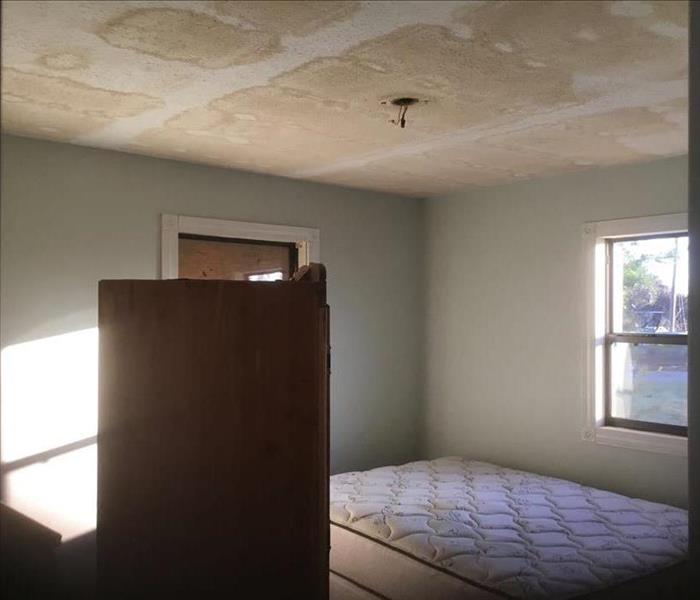 Ceiling inside the home a few weeks after Hurricane Micheal
Ceiling inside the home a few weeks after Hurricane Micheal
The aftermath of Hurricane Michael was devastating to many! Whether it be your home or business we are here to help. Sometimes you don't see the resulting damage immediately, however after only a few days of the insulation being saturated can cause the visible effects shown here. Drywall has to be removed to gain access to the insulation inside of exterior walls and in the ceiling. Sometimes we can access the insulation through the attic but in many cases the ceiling has to be removed to dispose of the wet insulation.
The wall cavity and the ceiling cavity (the framing) is then treated with an antimicrobial to assist with any bacterial growth and then we drying equipment is used to dry out the other structural components.
These steps are important. If not done properly you take the chance of possibly mold issues in the future. Be sure to test for moisture in the framing prior to replacing insulation and drywall.
These are services SERVPRO of Columbia and Suwannee Counties offer so call us if you find yourself in this situation.
SERVPRO Partners With the Red Cross
1/15/2019 (Permalink)
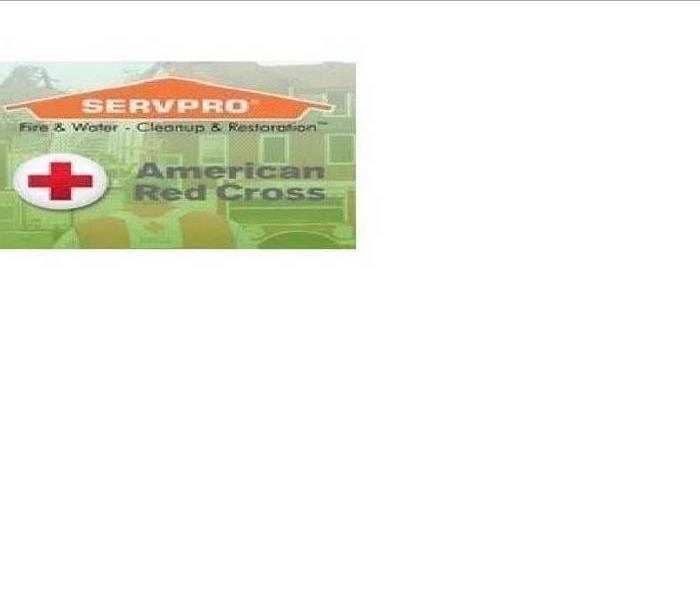 Please donate to help those in need. If you can't donate financially, you can donate time!
Please donate to help those in need. If you can't donate financially, you can donate time!
Each year, the Red Cross responds to nearly 70,000 disasters — the majority of which are home fires. Whether a disaster impacts a single family or a hundred, the Red Cross is there when people need our help the most. The Red Cross doesn’t just help families recover from disaster; they also prepare communities before home fires strike. Believe it or not, home fires kill more Americans than all other disasters combined. The Red Cross is working to prevent these needless losses through the Home Fire Preparedness Campaign.
Join SERVPRO Industries in support of the American Red Cross by making a gift to support Home Fire Relief. Your gift to Home Fire Relief will support communities like ours nationwide by providing families and communities with the lifesaving tools and information they need to prevent and prepare for home fires, as well as offer critical recovery services to those impacted by home fires. Together, we can better prepare our community for home fires and support families who experience them. Thank you in advance for your support.
SERVPRO Disaster Response
1/5/2019 (Permalink)
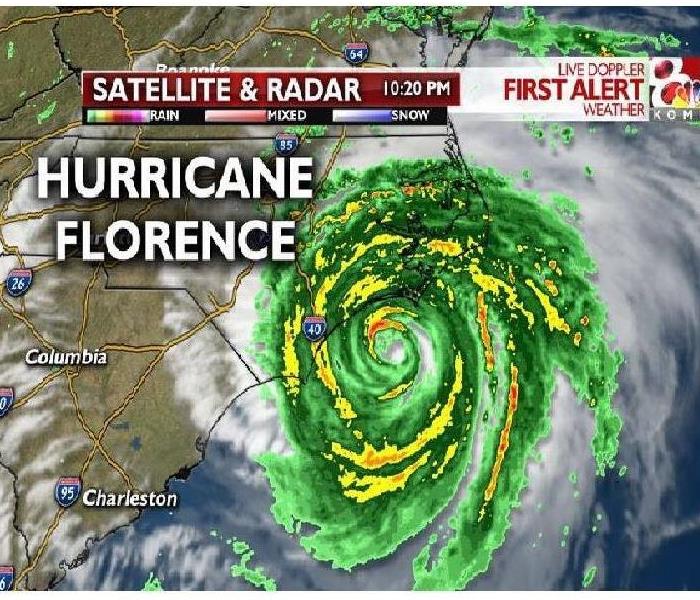 Whether a Hurricane, Tornado, Freeze Event, Flood, Fire/Smoke SERVPRO can respond quickly!
Whether a Hurricane, Tornado, Freeze Event, Flood, Fire/Smoke SERVPRO can respond quickly!
How Our Local Community Responds to Hurricanes
SERVPRO works as a team across the country to help those that have been affected by a disaster. In years past, our local franchise has sent crews to various hurricane sites to help reach customers faster so that they can begin putting their lives back together. Local crews from SERVPRO of Columbia & Suwannee Counties has helped with hurricane relief as well as cold weather mass freezing.
Faster to Any Size Disaster
Being a part of SERVPRO, we know that our job is to help customers and victims of disasters put their lives back together. It's nice to know that if a tornado, flood, ice storm, or any other disaster were to strike the heartland, that there are over 1,700 franchises in our system that can come to our aid to help you put your life back together.
Just remember that SERVPRO is faster to any size disaster.
Make Storm Damage Cleanup Easy With SERVPRO
12/22/2018 (Permalink)
 Winds and Rains Brought by the Storms Can Create Damaging Effects
Winds and Rains Brought by the Storms Can Create Damaging Effects
Storms can happen in any season and can bring with them not only heavy rainfall but also hail and high winds. These elements of nature can be very damaging to a home or business. The damage can be so extensive that not only the exterior but the interior becomes damaged also.
High winds, particularly those with even faster and stronger gusts, can rip off siding on exterior walls and tear off shingles from the roof. This stripping away of your home's protective layers can create openings for rainwater to enter. Debris from the storm can also be carried into these openings. Storm damage often involves trees downed from the high winds. This added weight which is often sudden is typically too heavy for a home's roof to bear causing it to collapse.
Breaking glass occurs to windows and sliding glass doors when they cannot withstand flying debris. Because of the high possibility of power lines being nearby cleaning up storm damage is not recommended except by trained and experienced professionals. At SERVPRO, we have the training and the experience to quickly and professionally bring your home and business back into a safe state of being.
We put our training, education, and experience to work for you as a team, using the latest in technology and techniques, ensuring that your home will return to its previous welcoming state quickly.
Storms Happen Any Time of the Day! We are Available 24/7 to Serve You
Contaminated Flood Waters
5/22/2018 (Permalink)
 Contaminated Flood Waters Contain Pathogens and Dangerous Debris
Contaminated Flood Waters Contain Pathogens and Dangerous Debris
When we respond to a case of flood damage, one of the most frequent questions our technicians is, "what is black water?" Black water is heavily contaminated water which is not only unsafe to drink but also is hazardous simply to be around. It can be difficult to judge conditions in black water due to its typical gray, brown, or black coloration, with small particles often hiding potentially far greater hazards lying within. Here are a few things that can be found in a typical sample of black flood water. Dirt and Soil Typically, most of the coloration in black water comes from dirt and soil trapped within. Many cases of flood damage and surrounding areas result from heavy storms and rain, and these floodwaters more often than not pick up significant amounts of soil before they ever reach a home. Although this dirt may sound harmless, it, in reality, makes the water much heavier and more difficult to navigate if you get caught in it. Microorganisms in Black Water although the amount and type of organisms in flood can vary depending on its causes and specifics, almost all samples of black water contain very high levels of microorganisms. These may be parasites, bacteria, viruses, mold, or many other types of organism, and they may be able to cause health effects if ingested or absorbed through the skin. This is why it is never advised to drink flood waters and to seek medical attention immediately if you have. Sharp Metal and Glass It can be very difficult to see sharp objects in a mass of floodwater, but even if you feel you are confident that such materials are not in the water, it is best always to assume they are. Sharp materials, even if they are tiny, often constitute one of the water's greatest risks. If they open up a small cut or wound, this spot may go unnoticed by you but later on develop a bad infection. If you have been cut or had black water touch an open wound, immediately disinfect the wound and apply medical aid as needed. SERVPRO of Columbia & Suwannee Counties deals with black water flood damage so that you don't have to. If your home has been caught in a flood, call us at (386) 754-0261 for mitigation and restoration services.
Local or Long Distance - Storms are Handled
1/5/2018 (Permalink)
SERVPRO of Columbia & Suwannee Counties specializes in storm and flood damage restoration. Our crews are highly trained and we use specialized equipment to restore your property to its pre-storm condition.
Faster Response
Since we are locally owned and operated, we are able to respond quicker with the right resources, which is extremely important. A fast response lessens the damage, limits further damage, and reduces the restoration cost. While we are physically located in Lake City, FL, we provide service to a large portion of North Central Florida including Live Oak (Suwannee County), Lake Butler (Union County), Jasper (Hamilton County), Macclenny (Baker County), Mayo (Lafayette County), and Madison (Madison County).
Resources to Handle Floods and Storms
When storms hit our communities, we can scale our resources to handle a large storm or flooding disaster. We can access equipment and personnel from a network of 1,700 Franchises across the country and elite Disaster Recovery Teams that are strategically located throughout the United States. There is no loss too large for our teams.
Have Storm or Flood Damage? Call Us Today - 386-754-0261
Facts for Hurricane Season
1/5/2018 (Permalink)
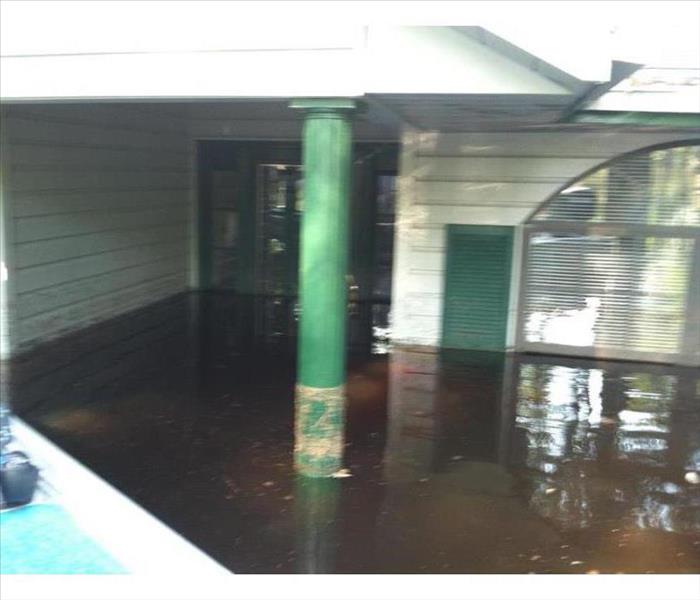 Tropical Storm Debbie - 6 ft of water
Tropical Storm Debbie - 6 ft of water
While the summer season is known for the potential to experience severe weather, the threat exists throughout the fall months as well. In fact, the potential for severe weather even increases in some areas. Hurricane season in the Atlantic begins June 1st and runs through November 30th. The Eastern Pacific Hurricane season begins May 15th also ending November 30th.
While it may be difficult to prepare for the unpredictable, there are steps you can take now to ensure you are ready when disaster strikes. One way to prepare your business for any type of disaster, is to establish an Emergency READY Profile (ERP). Contact your local SERVPRO of Columbia & Suwannee Counties to learn more about the ERP and how it can help you. Consider the following tips when preparing for an approaching storm.
Before the Storm
- Build an emergency supply kit and develop a communication plan.
- Unplug any electronic equipment before the storm arrives.
- Secure outdoor objects that could blow away or cause damage.
- If you are outdoors, get inside a building, home or hard top vehicle (not a convertible).
- Shutter windows and secure outside doors. If shutters are not available, close window blinds, shades or curtains.
During the Storm
- Use your battery-operated NOAA Weather Radio for updates from local officials.
- Avoid contact with corded phones. Cordless and cellular phones are safe to use.
- Avoid contact with electrical equipment or cords.
- Unplug appliances and other electrical items, such as computers. Power surges from lightning can cause serious damage.
- Avoid contact with plumbing. Plumbing and bathroom fixtures can conduct electricity.
- Stay away from windows and doors.
After the Storm
- Never drive through a flooded roadway.
- Stay away from storm-damaged areas to keep from putting yourself at risk.
- Stay away from downed power lines and report them immediately.
Below is a recommended items for basic emergency supply list
Emergency Supply Kit
- Water (one gallon per person per day)
- Food (non-perishable 3-day supply)
- Manual can opener
- Battery operated radio, preferably a NOAA Weather Radio
- Flashlight and extra batteries
- First Aid Kit
- Whistle to signal for help
- Clothing
- Dust Masks or bandanas
- Plastic sheeting, garbage bags and duct tape
- Wrench or pliers to turn off utilities
- Hygiene items
- Important documents; copies of insurance policies, identification and bank account information
- Cash
- Fire extinguisher
- Matches in a waterproof container
Texas - Hurricane - Flooding - Storm Team
12/20/2017 (Permalink)
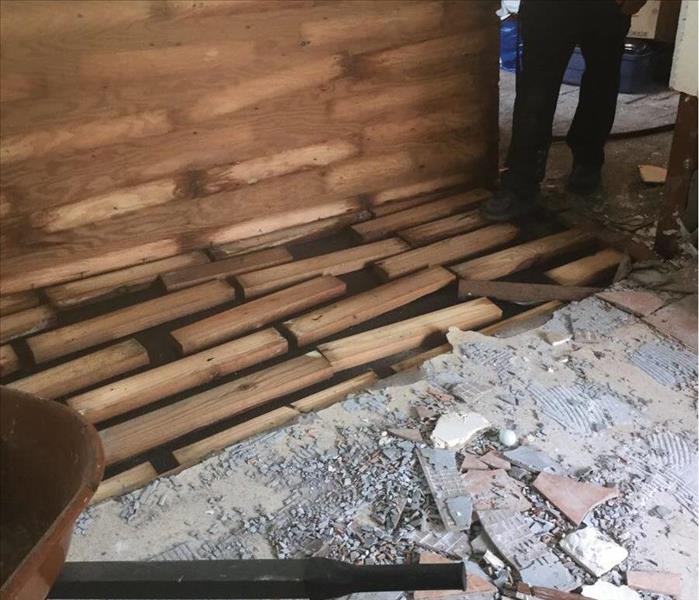 Several Layers of Flooring to be removed.
Several Layers of Flooring to be removed.
Several times SERVPRO of Columbia & Suwannee Counties has traveled to help with hurricane cleanup over the past 11 years and continue to do so. Our franchise staff members enjoy being able to assist other franchises when the STORM hits their area. A few months ago we traveled to Sugarland, TX to help out for a little over two weeks. As you know.... Irma hit Florida right afterwards so we came home to help our local customers immediately. We were able to help some of the surrounding Florida franchises but mostly serviced Columbia, Suwannee, Hamilton, Union, Lafayette as well as Starke, MacClenney, Madison, Perry, Chiefland, Steinhatchee and many others.
We come across a wide variety of things while traveling that keep the jobs interesting.....
As you can see in the photo, sometimes we get surprised by how many layers of flooring there is or how difficult they come up. We hope our customers understand unforeseen reasons for the completion schedule to change slightly in occasions such as this. We have included a few things to assist you if you experience a flood in your home or business below.
What To Do After Flooding
- Remove excess water by mopping and blotting.
- Wipe excess water from wood furniture after removal of lamps and tabletop items.
- Remove and prop wet upholstery and cushions.
- Place aluminum foil or wood blocks between furniture legs and wet carpeting.
- Turn air conditioning on for maximum drying in summer.
- Remove colored rugs from wet carpeting.
- Remove art objects to a safe, dry place.
- Gather loose items from floors.
What NOT To Do After Flooding
- Don't leave wet fabrics in place. Hang furs and leather goods.
- Don't leave books, magazines or other colored items on wet carpet or floors.
- Don't use your household vacuum to remove water.
- Don't use television or other household appliances.
- Don't turn on ceiling fixtures if ceiling is wet, and keep out of rooms where ceilings are sagging.
As we hope you never have to experience a flood this is what to do if it happens.
Storm Damage To Your Roof
12/18/2017 (Permalink)
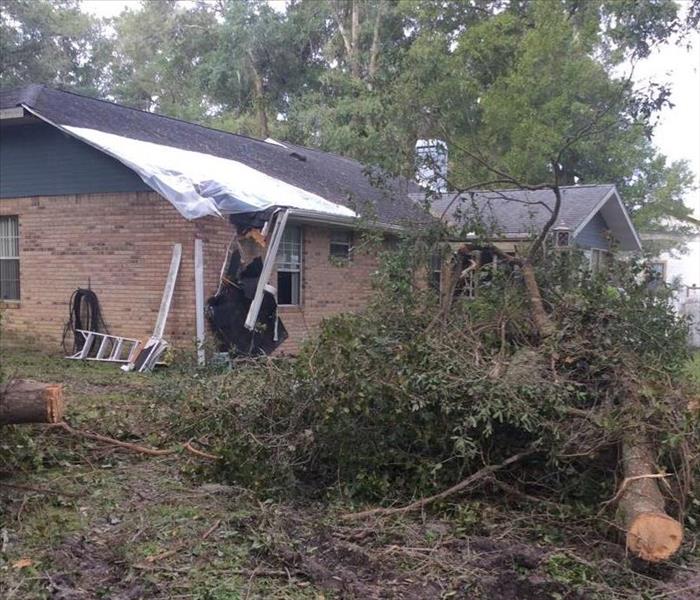 Home affected during Hurricane Irma located in the Country Club of Lake City, Florida
Home affected during Hurricane Irma located in the Country Club of Lake City, Florida
Even when there was no hail or rain produced during a storm, your roof can sustain damage. Strong winds make stress points on your roof which, over time, can weaken and be compromised. Roofs are made to resist typical winds; however, they can be damaged incrementally over years of high winds and debris blown around by the wind. It is important to fix the initial damage and replace missing shingles quickly to stop any high fuel costs and water damage that inevitably result from a roof which is damaged.
The effect that the wind has over your Lake City home’s roof is not uniform. Areas such as the perimeter and corners of your roof are susceptible to high wind pressures and storm damage, while the center could have fewer stresses. Most wind damage begins at the edge of the roof. Anywhere the material of the roof is just a bit loose, the wind gets under it and pushes it up, therefore giving the wind more to grab onto during the next storm, which makes a peeling effect. This type of damage can begin quite small, but keep growing over time through repeated exposure to the wind.
SERVPRO can be counted on to help get your roof repaired when storm damage has ravished it. With our professional training and courteous, timely work, we can help to prevent further damage to your home from intruding water by covering damaged areas with tarps or plywood for temporary protection. We then focus on restoring water damage of the attic and other affected areas. Our technicians may be able to do the roof repairs, but we can always get help from one of our roofing contractor partners to rebuild your roof to code when needed.
Tree Damage And Flying Debris
Wind events which are significant also cause debris to fly into your roof. Tree branches, shards of glass, and other debris can be more damaging than the wind at times. When looking at your roof after a windstorm, investigate what could have blown across or onto the roof. It's a good idea to check your downspouts and gutters since debris can clog them and make other problems in the future. Make sure to keep your trees trimmed and away from the roof. Tree branches that touch a roof gouge and scratch roofing materials when branches are being blown around. Overhanging trees which have falling branches cause damage or even puncture shingles and other materials on your roof.
If you suspect damage to your roof, call SERVPRO right away. Remember, the longer you wait, the more damage occurs. The cost to replace or repair your roof is much less when you do not have added water damage and leak repair costs. We also help you speak with your insurance company to take some of the stress off you and to help you file your claim. All damage gets documented thoroughly, and we draw up a plan for remediation before we even begin any work.
SERVPRO of Columbia & Suwannee Counties understands how important it is to repair a roof that has sustained storm damage. The protection of your family and home depend upon your roof, so we are available at all hours when you dial (386)754-0261.
When Storms or Floods hit Columbia and Suwannee Counties, SERVPRO is ready!
7/11/2016 (Permalink)
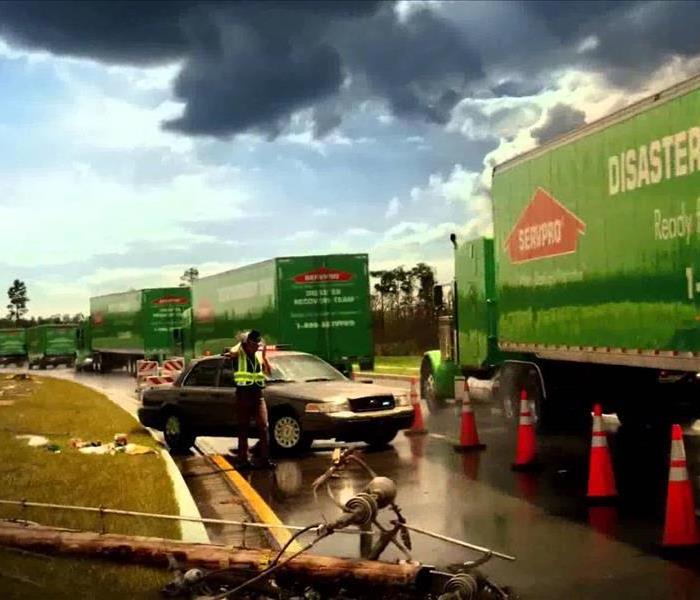 Our highly trained crews are ready to respond 24/7 to storm or flood damage in Lake City.
Our highly trained crews are ready to respond 24/7 to storm or flood damage in Lake City.
SERVPRO ofColumbia & Suwannee Counties specializes in storm and flood damage restoration. Our crews are highly trained and we use specialized equipment to restore your property to its pre-storm condition.
Faster Response
Since we are locally owned and operated, we are able to respond quicker with the right resources, which is extremely important. A fast response lessens the damage, limits further damage, and reduces the restoration cost.
Resources to Handle Floods and Storms
When storms hit Lake City, Live Oak, and surrounding areas, we can scale our resources to handle a large storm or flooding disaster. We can access equipment and personnel from a network of 1,650 Franchises across the country and elite Disaster Recovery Teams seen *here* that are strategically located throughout the United States.
Here are a few tips should you find yourself in a storm damaged area. These tips will help minimize damage until professional help arrives.
- First and foremost, do not operate any equipment that requires electrical power in areas that have standing water or moisture.
- If the water has entered the structure through the flooding of a creek, stream, or river, if it is seawater, or if it has filtered through insulation during its intrusion, it is considered to be black water and could be hazardous to your health. For this type of damage, avoid contact with contaminated items as much as possible.
- Take the greatest caution while entering your home, and wear sturdy shoes and protective clothing when dealing with flooded areas.
- Throw away all foods - even canned goods - that have come into contact with flood waters.
- Remove and prop wet upholstery and pillow cushions for drying. Wipe excess water from wood furniture after removal of lamps and tabletop items.
- Only open windows to promote drying if the air outside is less humid than the air inside.
- If your home has a crawlspace, be aware excess moisture in this area can often foster mold growth.
Have Storm or Flood Damage? Call Us Today (386) 754-0261
Lake City Takes A Trip to Baltimore Area
5/4/2015 (Permalink)
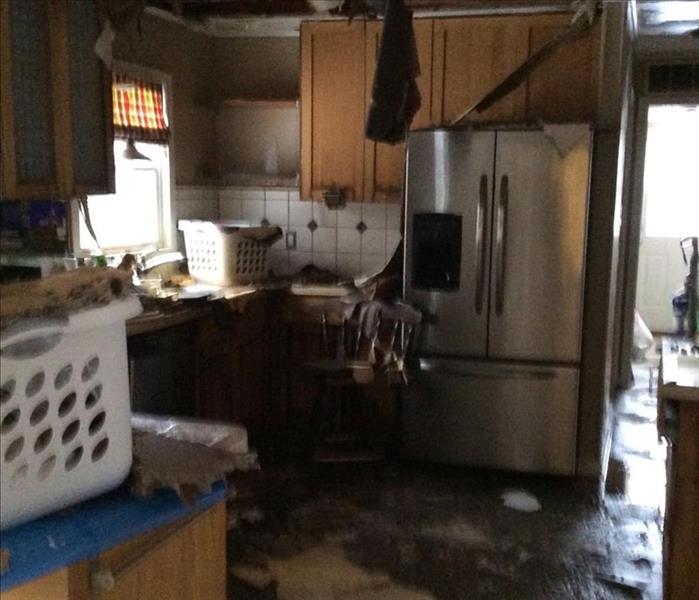 Prior to us removing damaged materials and dryout
Prior to us removing damaged materials and dryout
Recently we were contacted by the SERVPRO Storm Team to travel and help customers in the Baltimore & Washington DC Area. Our crews have returned home and our experience was a positive one. We were able to help 22 residential customers in a 2-week period. Removing damaged items and drying out their homes! We are appreciative of SERVPRO being a Nationwide company to allow us to travel and service other communities as well as our own.
Panhandle Storm - Floods
5/21/2014 (Permalink)
When the Panhandle was hit with numerous storms last month, we sent out head technicians over to help the local SERVPRO of Navarre as their office had water damage to it. It was a long two weeks and many customers in need were helped. We want to thank our staff for traveling in someone else's time of need. It was only two years ago that Lake City dealt with flooding from Tropical Storm Debby.




 24/7 Emergency Service
24/7 Emergency Service



